- Home
- Facilities
- Research
-
Working at CFN
- Arrival & Departure
- Reports & Publications
- Acknowledging Use of CFN Facilities
- Data Management
- The Guide to Brookhaven
Safety Procedures
- Operations Plan
- Experimental Safety Reviews (ESR)
- COSA Training
- Hours of Operation
- Laser System Qualification
- Transport of Hazardous Materials
- Vendor On-site Scheduling Procedure (PDF)
- News & Events
- People
- Jobs
- Contact
- Business
- Intranet
CFN News Archives
2025

Researchers Demonstrate Substrate Design Principles for Scalable Superconducting Quantum Materials
Tuesday, November 18, 2025
Silicides are promising for quantum hardware, but achieving phase purity remains a key challenge; new NYU Tandon–Brookhaven Lab study shows that crystalline hafnium oxide substrates offer guidelines for stabilizing the superconducting phase.
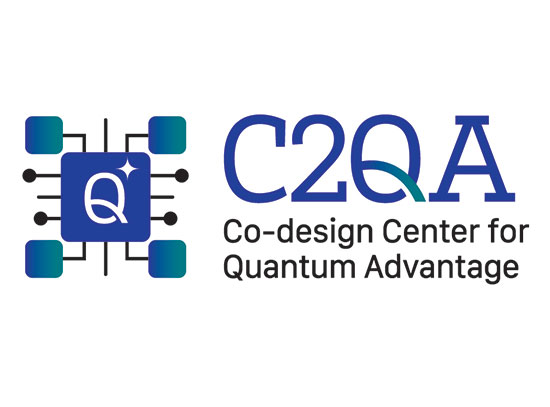
DOE Renews Brookhaven Lab-led Quantum Research Center
Tuesday, November 4, 2025
The Co-design Center for Quantum Advantage will deliver advances in materials science and modular architectures to enable scalable, fault-tolerant quantum systems.
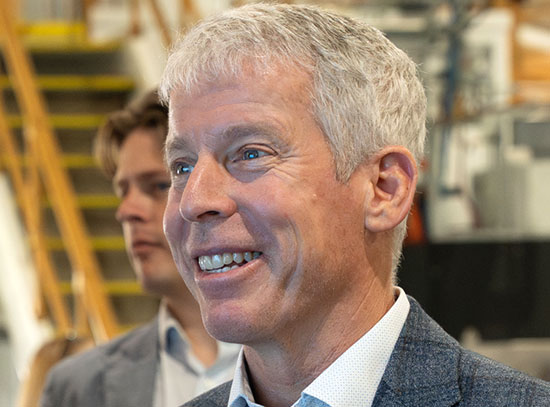
Energy Secretary Chris Wright Visits Brookhaven National Laboratory
Tuesday, September 30, 2025
U.S. Energy Secretary Chris Wright took a behind-the-scenes tour of cutting-edge science and technology facilities at the U.S. Department of Energy’s Brookhaven National Laboratory on Tuesday, Sept. 30.
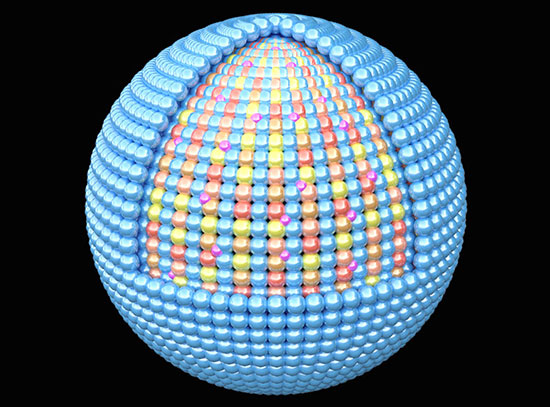
Scientists Develop Fuel-Cell Catalyst for Heavy-Duty Vehicles
Wednesday, September 24, 2025
New recipe for catalysts could dramatically improve performance and durability of fuel cells for powering trucks
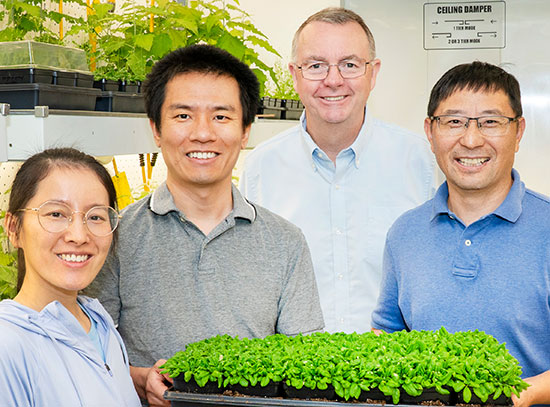
Biologists Identify Plant-specific Protein Essential for Survival
Tuesday, September 16, 2025
A newly identified protein — not found in animals or fungi — plays a key role in sterol synthesis.
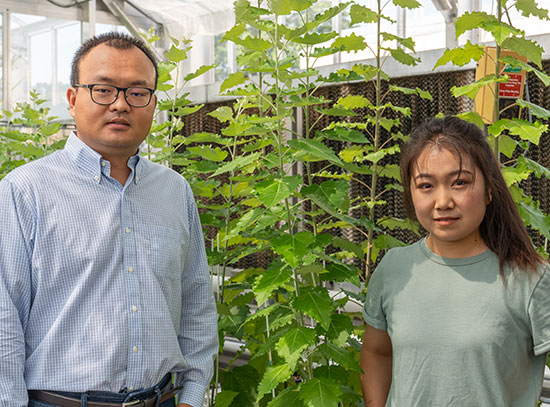
Biologists Engineer Larger, Tougher Crops for Fuel, Bioproducts
Wednesday, September 3, 2025
Disruption of plant gene boosts lignin production, growth, and immunity
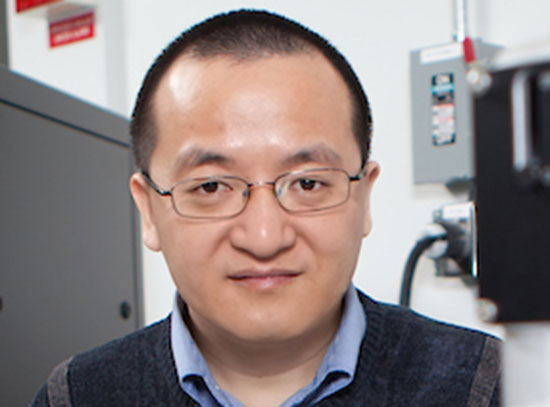
New research could lead to greener, faster metal production
Wednesday, August 20, 2025
Study by Binghamton University and Brookhaven National Lab published in Nature.
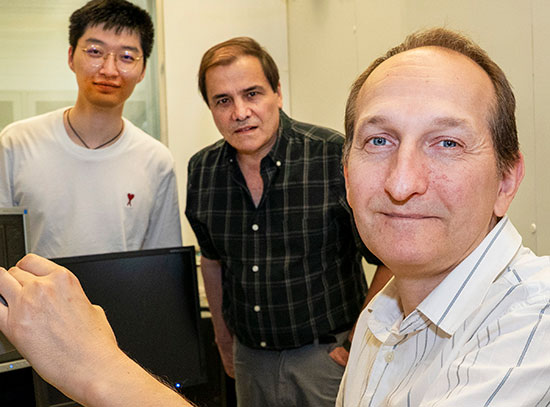
Small, Shapeshifting Catalytic Nanoparticles Steer Carbon Dioxide Conversion
Thursday, August 7, 2025
First-of-its-kind multimodal study reveals that smaller catalytic nanoparticles transform while converting carbon dioxide, unlike their larger counterparts.
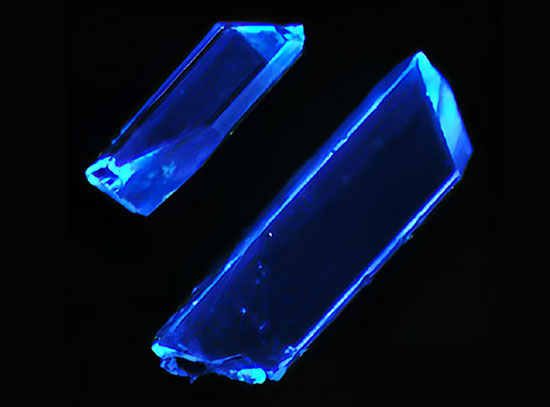
New Source of Brilliant Deep Blue Light
Wednesday, July 16, 2025
Copper-iodide thin films form foundation for efficient and stable LEDs with hard-to-achieve deep blue hues
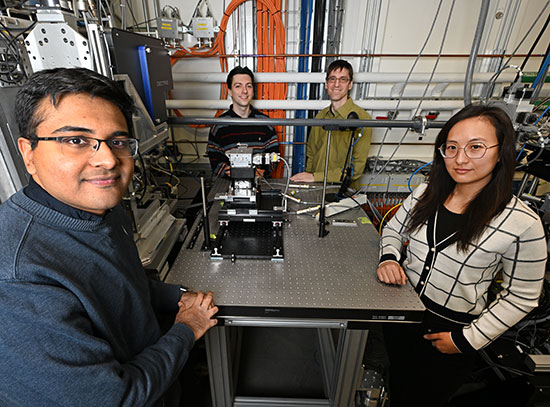
A VISION for an AI Lab Partner
Thursday, June 26, 2025
Brookhaven National Lab scientists have dreamed up, developed, and tested a novel voice-controlled artificial intelligence (AI) assistant designed to break down everyday barriers for busy scientists.
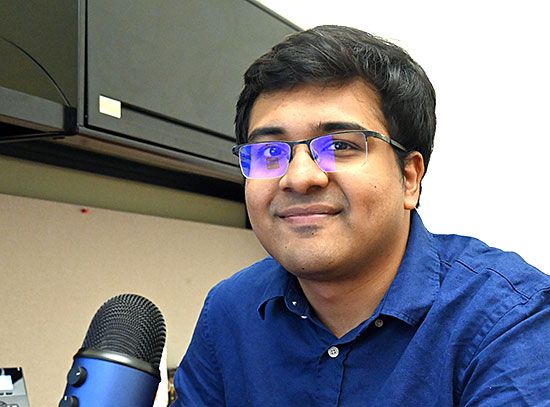
Developing Innovative AI Tools for Nanoscience with Shray Mathur
Friday, June 20, 2025
Shray Mathur is a scientific associate at the Center for Functional Nanomaterials (CFN), where he studies artificial intelligence (AI) and machine learning (ML) models that can be applied to nanoscience research.
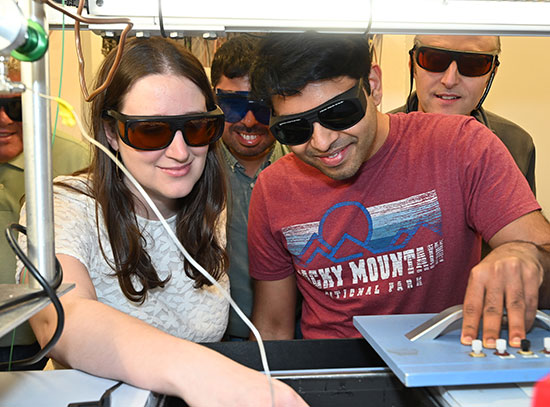
Light-activated Metal Catalyst Selectively Converts CO2 to Industrial Chemical
Monday, June 16, 2025
‘Ligand-based’ reaction mechanism prevents unwanted byproducts, opens possibility of using Earth-abundant metals
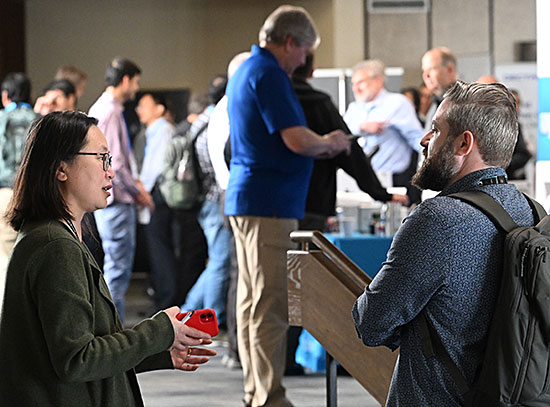
Accelerating Discovery Together
Tuesday, May 27, 2025
Users and staff explore new ideas and shared ambitions at the annual NSLS-II & CFN Users' Meeting.
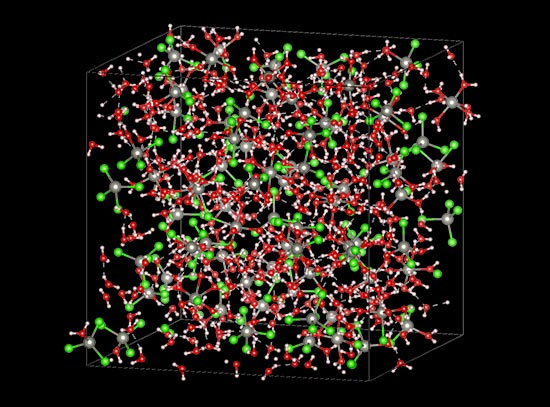
Scientists Use AI and X-ray Vision to Gain Insight into Battery Electrolyte
Thursday, May 22, 2025
Artificial intelligence and experimental validation reveal atomic-scale basis for improved ‘water-in-salt’ battery performance
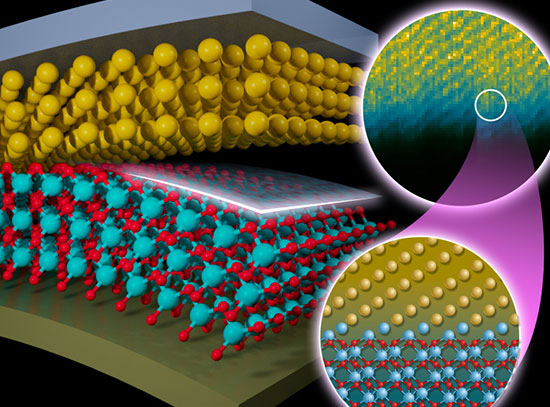
Scientists Reveal Hidden Interface in Superconducting Qubit Material
Monday, May 5, 2025
The metal-substrate interface determines atomic structure and could affect qubit performance.
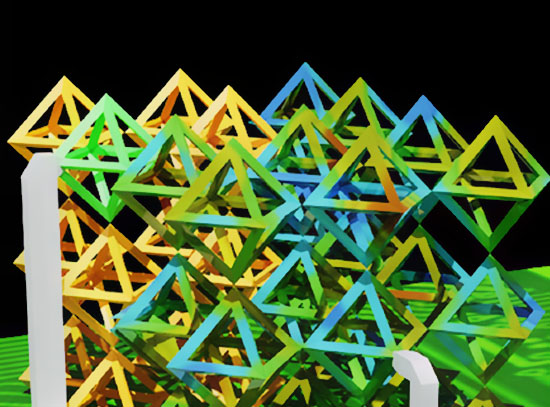
DNA Helps Electronics to Leave Flatland
Tuesday, April 1, 2025
These miniature scaffolds for 3D circuits are designed to assemble themselves.

Artificial Imagination
Thursday, January 16, 2025
A Brookhaven Lab researcher has conceptualized an “exocortex,” an extension of the human brain that will generate inspiration and imagination for scientific discovery.
2024

Brookhaven's Top 10 Discoveries of 2024
Thursday, December 19, 2024
Brookhaven Lab celebrates a year of scientific successes, from creating the biggest bits of antimatter to improving qubits, catalysts, batteries, and more!
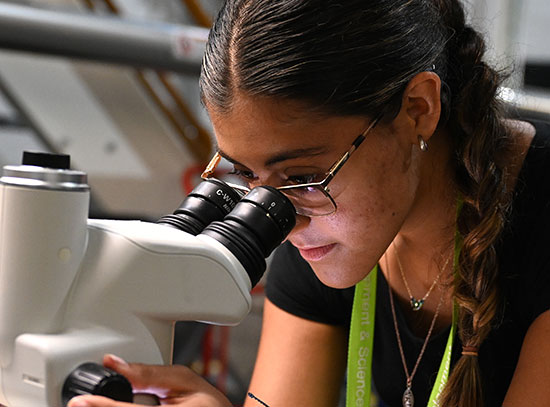
Brookhaven Lab User Facility Summer School: Building Research Connections
Wednesday, October 2, 2024
This summer, 13 students had the unique opportunity to carry out a research project across three user facilities.
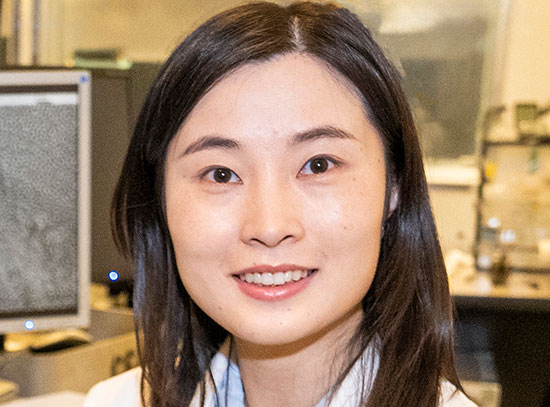
Advancing in situ Transmission Electron Microscopy Research with Meng Li
Monday, September 23, 2024
CFN scientist Meng Li discusses her transmission electron microscopy research and assisting users on CFN microscopy tools.
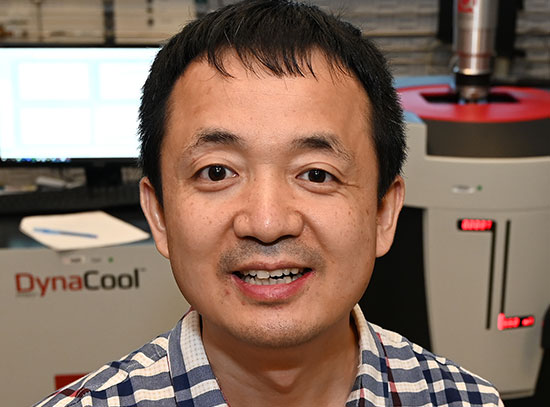
Constriction Junction, Do You Function?
Wednesday, September 18, 2024
A different qubit architecture could enable easier manufacturing of quantum computer building blocks without compromising performance.
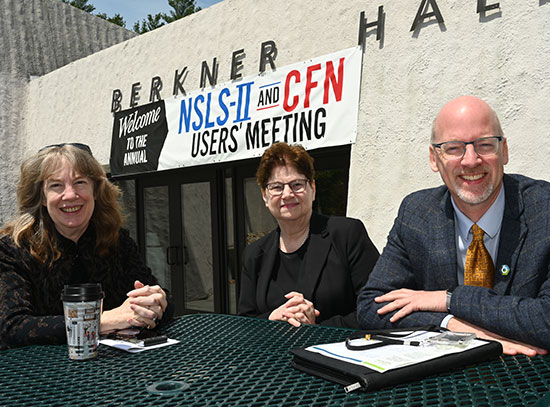
NSLS-II & CFN Users' Meeting Celebrates Togetherness and Great Science
Monday, September 16, 2024
Users, staff, and leaders gathered in person, for the first time in years, to share research and discuss the future.
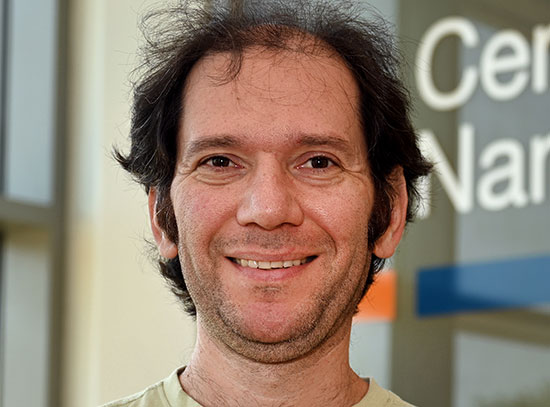
Battelle Names Anibal Boscoboinik 'Inventor of the Year'
Friday, August 23, 2024
Honor recognizes advances in noble gas trapping technology with applications in industry and environmental health
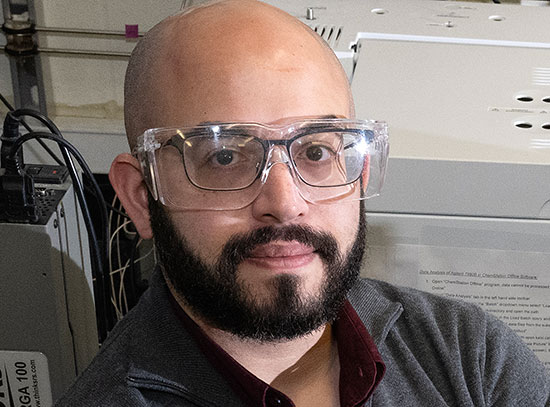
Catalyst for 'One-Step' Conversion of Methane to Methanol
Thursday, August 22, 2024
Scientists demonstrate highly selective catalyst for low-temperature, direct conversion of natural gas to liquid fuel.
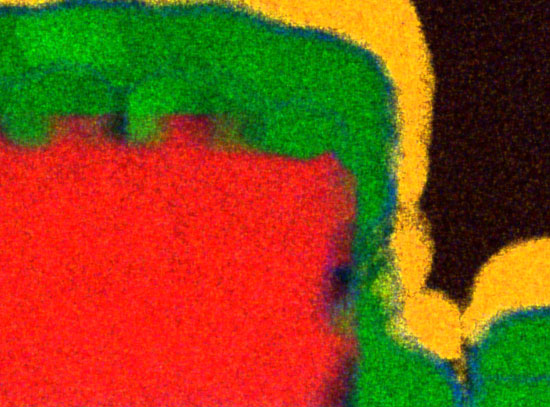
Studying Loss to Make Quantum Computing Gains
Monday, August 12, 2024
By characterizing sources of energy loss and optimizing quantum circuits, scientists have reached a major performance milestone for quantum devices.
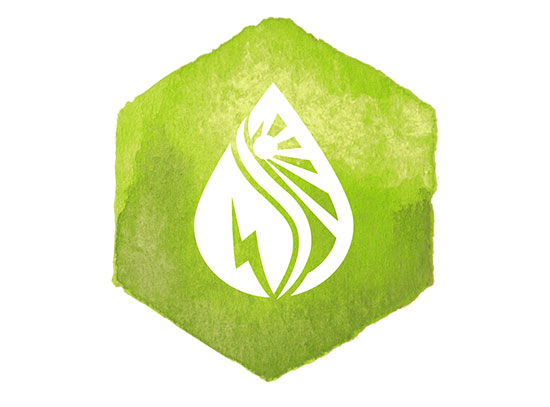
Visit Brookhaven Lab for "Innovation and the Environment," 8/4
Thursday, August 1, 2024
Visit the Center for Functional Nanomaterials, where researchers probe tiny structures for big discoveries! See electron microscopes and a clean room, where research teams work with advanced materials at the nanoscale.
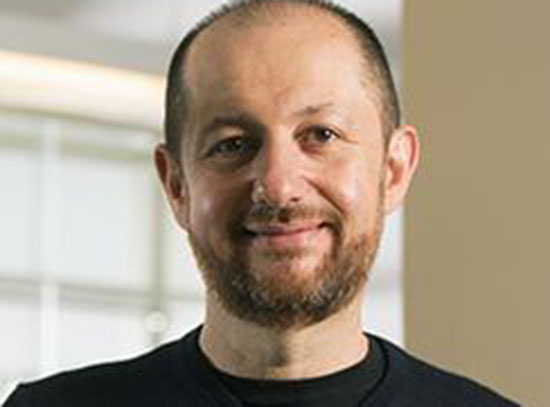
Oleg Gang Named a 2024 Vannevar Bush Fellow
Friday, July 19, 2024
Department of Defense award will support Gang’s research on evolving materials.
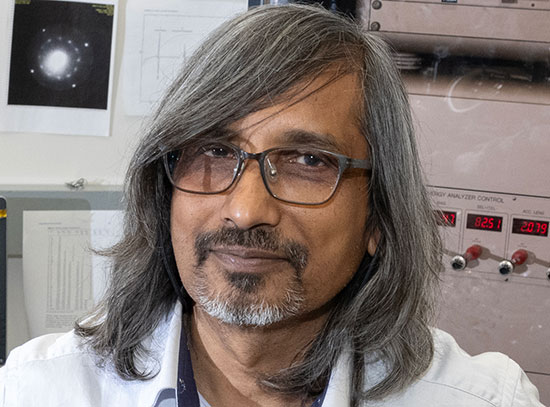
Seeking New Physics in Atomically Thin Materials with Abdullah Al-Mahboob
Wednesday, June 26, 2024
CFN scientist Abdullah Al-Mahboob discusses his research into developing two-dimensional quantum materials.
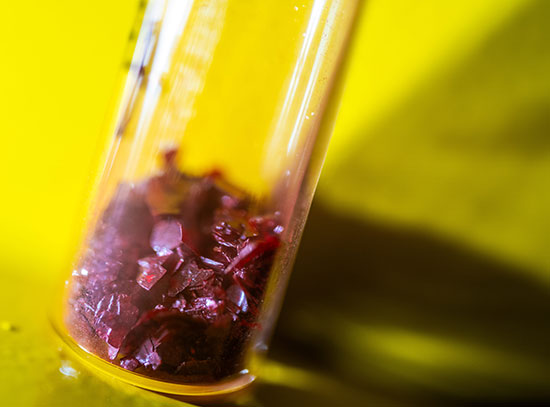
Rice Lab Achieves Major Gains in Perovskite Solar Cell Stability
Tuesday, June 25, 2024
Synthesis process boosts performance to near market-ready standards.
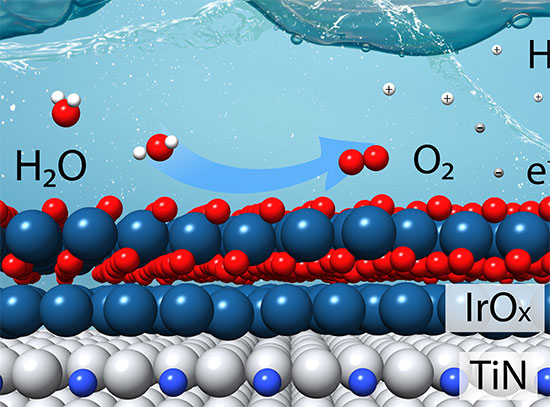
Scientists Make and Test Efficient Water-Splitting Catalyst Predicted by Theory
Tuesday, June 11, 2024
Successful demonstration of improved catalyst may boost production of hydrogen from water
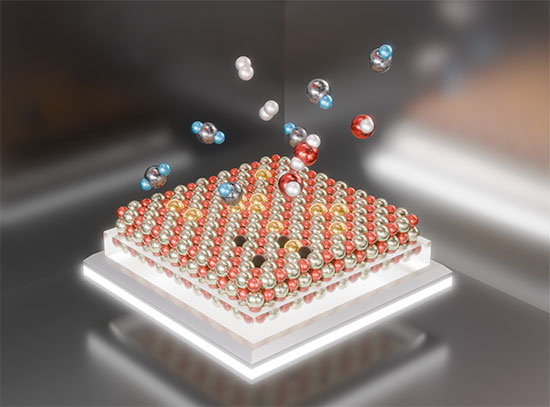
Study Reveals Reversible Assembly of Platinum Catalyst
Monday, June 3, 2024
Combo of methods explains how a nanoparticle catalyst assembles from single atoms during use and then disassembles for reuse
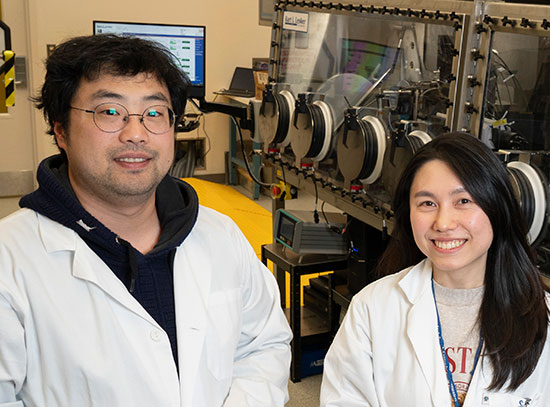
Speedy, Secure, Sustainable — That's the Future of Telecom
Tuesday, May 14, 2024
New study uncovers technologies that could unveil energy-efficient information processing and sophisticated data security.
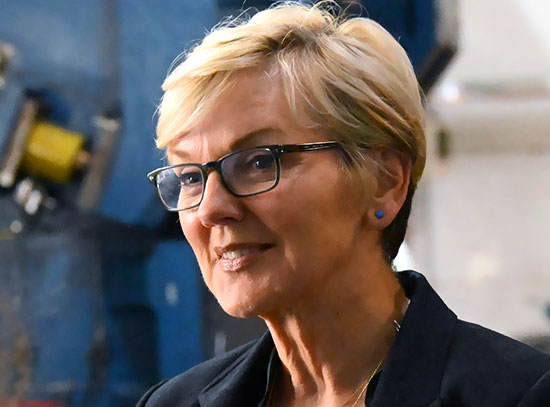
Energy Secretary Jennifer Granholm Visits Brookhaven National Laboratory
Friday, April 19, 2024
U.S. Secretary of Energy Jennifer Granholm visited Brookhaven National Laboratory on April 8-9, getting an up-close look at cutting-edge facilities researchers use to advance the mission of DOE and its Office of Science.
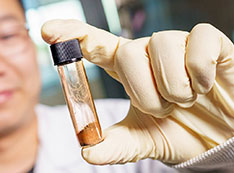
Healable Cathode Could Unlock Potential of Solid-state Lithium-sulfur Batteries
Monday, March 11, 2024
Researchers have moved one step closer to making solid-state batteries from lithium and sulfur a practical reality.

When Plants Flower: Scientists ID Genes, Mechanism in Sorghum
Thursday, March 7, 2024
Study points to genetic strategies for altering crop-plant flowering time to increase production of fuel-generating biomass.

Protecting the Protector Boosts Plant Oil Content
Thursday, February 8, 2024
Scientists demonstrate new genetic strategy for preventing breakdown of plant oils needed for biofuels and other products
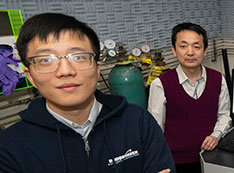
Magnesium Protects Tantalum, a Promising Material for Making Qubits
Monday, February 5, 2024
Thin-film coating prevents oxidation that impairs superconductivity and quantum coherence
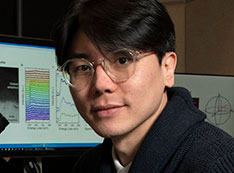
Direct View of Tantalum Oxidation that Impedes Qubit Coherence
Monday, February 5, 2024
Advanced electron microscopy and computational modeling reveal clues that may help improve performance of superconducting components for quantum computers
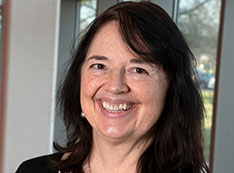
Studying Charge Transport in Semiconducting Polymers with Linda Peteanu
Tuesday, January 30, 2024
CFN user Linda Peteanu of Carnegie Mellon University discusses her research into the light-induced electronic properties of semiconducting polymers.
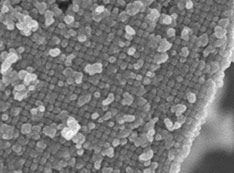
Hacking DNA to Make Next-Gen Materials
Wednesday, January 24, 2024
Scientists developed a universal method for producing a wide variety of functional, 3D metallic and semiconductor nanostructures.
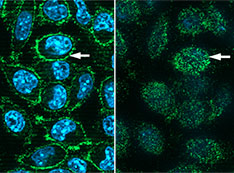
Scientists Make COVID Receptor Protein in Mouse Cells
Monday, January 22, 2024
Scientists get mouse cells to make human protein for possible use in COVID sensors or therapeutics.

Catalytic Combo Converts CO2 to Solid Carbon Nanofibers
Thursday, January 11, 2024
Tandem reactions converting CO2 to carbon nanofibers could help offset emissions of potent greenhouse gas by locking carbon away in a useful material.
2023
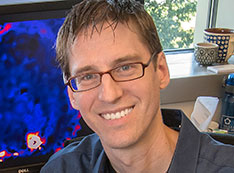
Brainstorming with a Bot
Friday, December 1, 2023
CFN's Kevin Yager develops a chatbot with a focus on nanomaterials that grounds its reasoning using trusted facts.
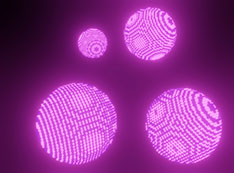
Scientists Observe Composite Superstructure Growth from Nanocrystals in Real Time
Thursday, November 9, 2023
Scientists and engineers see, in real time, how two nanoparticles made of different materials combine into new composite materials.
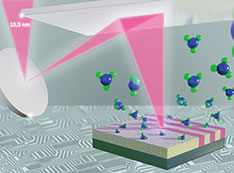
A Bright Future for Extreme UV Lithography at Brookhaven Lab
Wednesday, November 8, 2023
CFN scientists design a new, light-sensitive, hybrid material to improve the semiconductor fabrication process for microelectronics.
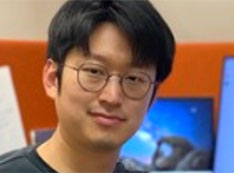
Silicon Ally: Penn Engineers Grow Full Wafers of High-Performing 2D Semiconductor That Integrates With State-of-the-Art Chips
Friday, October 6, 2023
Researchers at the University of Pennsylvania have grown a high-performing 2D semiconductor to a full-size, industrial-scale wafer.
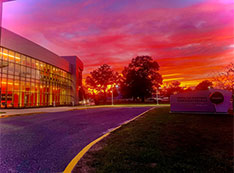
Brookhaven Lab Celebrates National Nanotechnology Day on October 9
Wednesday, October 4, 2023
The Center for Functional Nanomaterials—a U.S. Department of Energy Office of Science User Facility at Brookhaven National Laboratory—will mark "Nano Day" with activities to raise awareness of the science and impact of the ultrasmall, where objects span only billionths of a meter.
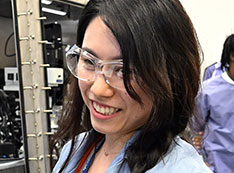
National Labs RENEWing Interest in STEM with Pathway Summer School
Monday, October 2, 2023
Brookhaven and Fermilab invite students that are traditionally underrepresented in STEM to engage in science at both labs
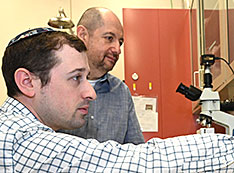
Strength Is in This Glass's DNA
Wednesday, September 27, 2023
Scientists coat specialized pieces of DNA with a pure form of glass to create a lightweight material that is stronger than steel.
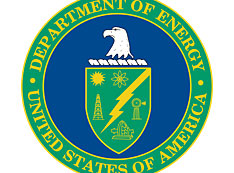
Department of Energy Announces $73 Million for Basic Research to Accelerate the Transition from Discovery to Commercialization
Wednesday, September 13, 2023
DOE announced $73 million in funding for eleven projects which focus on the goal of accelerating the transition from discovery to commercialization of new technologies that will form the basis of future industries.
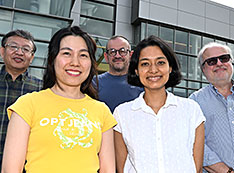
Valleytronics is Warming Up at Brookhaven Lab
Friday, September 8, 2023
Researchers at Brookhaven Lab and Northrop Grumman have found a way to maintain valley polarization at room temperature.
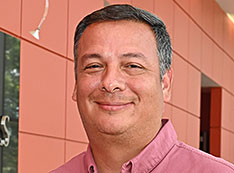
Armando Rúa Named Moore Foundation Experimental Physics Investigator
Wednesday, August 23, 2023
Armando Rúa, a CFN collaborator, was awarded a grant through the Gordon and Betty Moore Foundation.
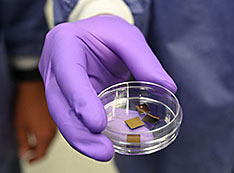
Making Big Leaps in Understanding Nanoscale Gaps
Friday, August 18, 2023
Scientists at CFN and the University of Warsaw created a new heterostructure that exhibits a unique transfer of energy and charge.
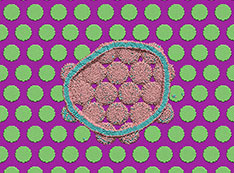
Scientists use ORNL's Summit Supercomputer to Learn How Cicada Wings Kill Bacteria
Monday, August 7, 2023
Over the past decade, teams of engineers, chemists and biologists have analyzed the physical and chemical properties of cicada wings, hoping to unlock the secret of their ability to kill microbes on contact. Researchers at Stony Brook University developed a simple technique to duplicate the cicada wing’s nanostructure, and used supercomputers at ORNL and tools at Brookhaven National Laboratory to learn how the nanopillars on its surface actually eliminate bacteria.

Four Brookhaven Scientists Receive Early Career Research Awards
Friday, August 4, 2023
Four scientists at the U.S. Department of Energy’s (DOE) Brookhaven National Laboratory have been selected by DOE’s Office of Science to receive significant funding through its Early Career Research Program.
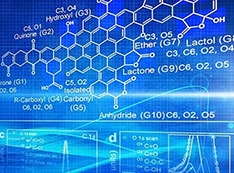
Material Improvements
Friday, July 21, 2023
University of Delaware’s Dion Vlachos and researchers in the Catalysis Center for Energy Innovation (CCEI), with collaborators from Brookhaven National Laboratory, made some surprising findings as they were developing techniques to better understand the role oxygen plays in how carbon-based catalysts perform.
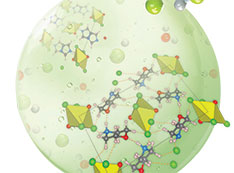
A Non-Covalent Bonding Experience
Wednesday, July 19, 2023
Scientists from the University of Iowa and Brookhaven Lab developed 14 organic-inorganic hybrid materials, 7 of which are brand new.

Small-scale Science at the Center for Functional Nanomaterials, 7/16
Thursday, July 13, 2023
July 16: Visit the Center for Functional Nanomaterials, where researchers probe tiny structures for big discoveries.
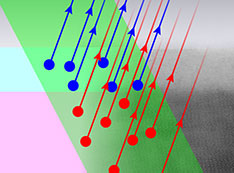
Understanding the Tantalizing Benefits of Tantalum for Improved Quantum Processors
Wednesday, May 31, 2023
Scientists decode the chemical profile of tantalum surface oxides to understand loss and improve qubit performance.
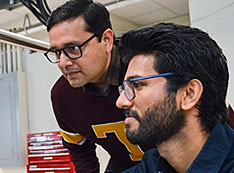
Stretching Metals Allows Researchers to Create Materials for Quantum, Electronic and Spintronic Applications
Thursday, May 25, 2023
Researchers develop new method to create thin oxide films from hard-to-oxidize elements like iridium.
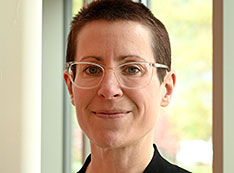
Using Computation and Theory to Enhance Nano-Agriculture and Beyond with Sara E. Mason
Wednesday, May 17, 2023
CFN Theory & Computation Group Leader Sara E. Mason talks sustainable nanotechnology, promoting wellness and inclusion, and bringing her teaching experience to her role.

Remote Operations Are Making the World a Little Smaller for Nanoscale Research
Wednesday, May 17, 2023
University Students in Puerto Rico are able to get a closer look at their materials using instruments at Brookhaven Lab in New York.
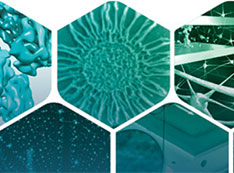
Reaching for New Horizons at the 2023 NSLS-II, CFN & LBMS Users' Meeting
Wednesday, May 17, 2023
This year's Users’ Meeting invited scientists, collaborators, and leaders from three of Brookhaven Lab’s user facilities to share their research.
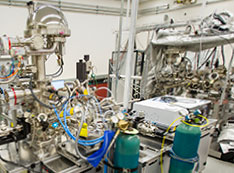
Scientists Use Peroxide to Peer into Metal Oxide Reactions
Friday, April 7, 2023
Using advanced in-situ spectroscopy techniques, scientists at Binghamton University and Brookhaven Lab gain new insights into catalytic oxidation.
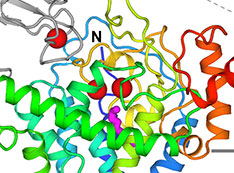
Structure of 'Oil-Eating' Enzyme Opens Door to Bioengineered Catalysts
Thursday, March 30, 2023
Atomic level details reveal how enzyme selectively breaks hydrocarbon bonds, suggesting bioengineering strategies for making useful chemicals.
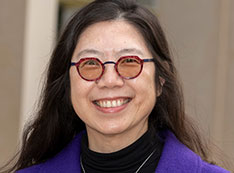
Leading Electron Microscopy and Diversity Efforts at Brookhaven Lab with Judy Yang
Wednesday, January 25, 2023
CFN Electron Microscopy group leader Judy Yang talks about her new role and her passion for promoting diversity in STEM fields
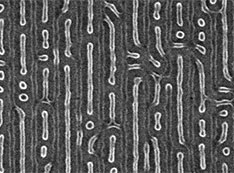
AI Discovers New Nanostructures
Friday, January 13, 2023
Researchers used artificial intelligence to discover three new nanostructures, including a first-of-its-kind nanoscale “ladder.”
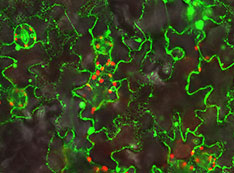
Study Identifies New Levers for Controlling Plant Biochemistry
Wednesday, January 11, 2023
Research reveals new tools for tailoring plants for range of applications, including carbon-neutral utilization of plant biomass for agro-industrial applications.
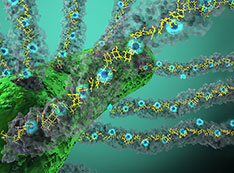
Light Accelerates Conductivity in Nature's 'Electric Grid'
Tuesday, January 10, 2023
Researchers discover that light is an ally in fostering electronic activity within the earth’s web of bacteria-generated nanowires.
2022
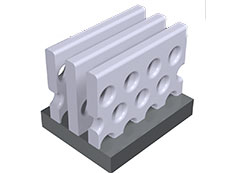
Scientists Build Nanoscale Parapets, Aqueducts, and Other Shapes
Thursday, November 17, 2022
Array of novel nanoscale architectures formed through guided self-assembly could yield materials with improved electronic, optical, and mechanical properties.
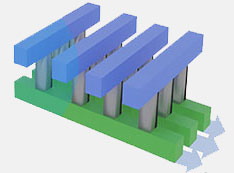
Rethinking the Computer Chip in the Age of AI
Thursday, October 13, 2022
Artificial intelligence presents a major challenge to conventional computing architecture.
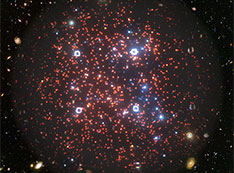
Brookhaven Lab Celebrates National Nanotechnology Day on October 9
Friday, September 30, 2022
The Center for Functional Nanomaterials—a U.S. Department of Energy Office of Science User Facility at Brookhaven National Laboratory—will mark “Nano Day” with activities to raise awareness of the science and impact of the ultrasmall, where objects span only billionths of a meter.
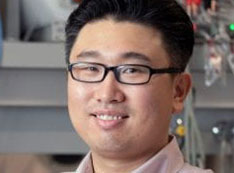
Cobalt-free Cathode Could Lead to Safer, Longer-lasting Batteries for Electric Vehicles
Wednesday, September 21, 2022
Researchers at the University of California, Irvine and four national laboratories have devised a way to make lithium-ion battery cathodes without using cobalt, a mineral plagued by price volatility and geopolitical complications.
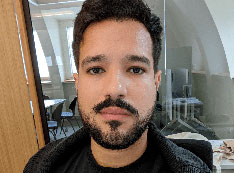
Guest Researcher Renan Leonel da Silva Conducts First Field Study at Brookhaven Lab
Tuesday, September 20, 2022
Science sociologist Renan Leonel da Silva explains his work on the sociology of molecular systems engineering research and the related field study he conducted at CFN.
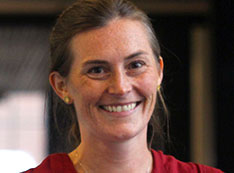
Hollen Receives $350,000 NSF Grant to Create New Two-Dimensional Materials
Monday, September 19, 2022
Hollen will work with Brookhaven Lab’s Quantum Materials Press to achieve unprecedented control over the physics in quantum materials.

Celebrating Collaborations and Opportunities at the 2022 NSLS-II & CFN Users' Meeting
Wednesday, September 14, 2022
Scientists, collaborators, and leaders from Brookhaven Lab and DOE convened virtually to celebrate completing another year of impactful research while overcoming challenges along the way.
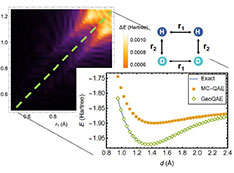
Quantum Chemistry Finds a New Path for Future Quantum Devices
Tuesday, September 13, 2022
A new quantum algorithm solves a critical problem in quantum chemistry through gradual adaptation along a specially chosen geometric path.
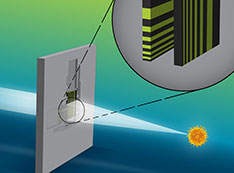
Brookhaven Lab Researchers Win 2022 Microscopy Today Innovation Award
Tuesday, August 23, 2022
The team developed a set of bonded x-ray lenses to overcome a long-standing alignment issue, making nanometer resolution more accessible than ever before.

Laiba Bilal Uses Nanotechnology to Unlock Clean Energy Sources
Friday, August 19, 2022
Meet Laiba Bilal, a PhD student researcher at the Center for Functional Nanomaterials.
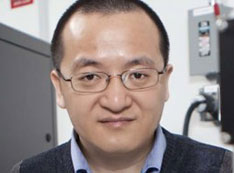
New Materials Research Sees Transformations at an Atomic Level
Wednesday, August 3, 2022
The findings could aid the design of new multiphase materials for clean energy applications and beyond.
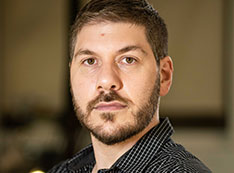
Unexpected Behavior Seen in Efficient Catalysts for Clean Energy
Monday, July 25, 2022
Learning how methanol binds to copper could lead to better catalysts for hydrogen production—and beyond.

Brookhaven Lab's Visiting Faculty Program Fosters New Nano Center at SUNY – Buffalo State
Thursday, July 21, 2022
By extending its duration, Saquib Ahmed leveraged the program’s resources to build out a nanoscience center at his home institution.

Brookhaven Lab's Chang-Yong Nam Named a Battelle 'Inventor of the Year'
Friday, May 27, 2022
Award recognizes Nam's achievements in developing new materials with properties for use in next-generation microelectronics.

Self-Assembly Theory and COVID-19 Modeling with Alexei Tkachenko
Monday, May 23, 2022
CFN theorist Alexei Tkachenko discusses his work on DNA-assisted self-assembled systems and modeling COVID-19 infection trends.
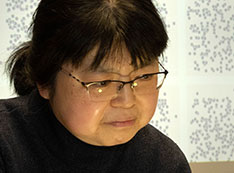
Machine Learning Framework IDs Targets for Improving Catalysts
Tuesday, May 10, 2022
Method provides details on reaction kinetics and zeros in on steps where tweaks could improve production of desired products
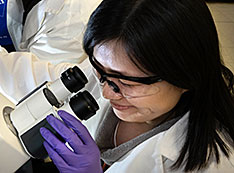
New Model for Antibacterial Mechanism: Toxic Misinformation
Friday, April 29, 2022
Discovery of an aberrant protein that kills bacterial cells could help unravel mechanism of certain antibiotics and point the way to new drugs

Seeing More Deeply into Nanomaterials
Wednesday, April 13, 2022
New 3D imaging tool reveals engineered and self-assembled nanoparticle lattices with highest resolution yet—7nm—about 1/10,000 of the width of a human hair.
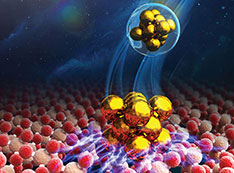
Researchers Create Nanoparticles to Address Environmental Problems
Wednesday, April 6, 2022
Researchers leveraged CFN facilities to develop a new generation of gold nanoparticles and measure their catalytic performance.
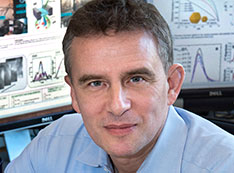
SBU, Harvard Lead Research Team That Solves Longstanding Problem in Catalysis Science
Tuesday, February 22, 2022
Researchers solved the active site structure in bimetallic catalysts at the atomic level.
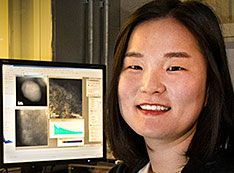
Engineering a Multi-Element Atomic Arrangement
Tuesday, February 15, 2022
Researchers developed a new approach to synthesize a unique class of intermetallic compounds at the nanoscale.
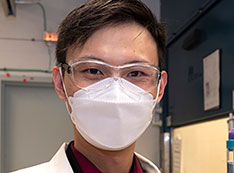
Steering Conversion of CO2 and Ethane to Desired Products
Wednesday, February 9, 2022
Study IDs key catalytic features that drive reaction specificity when transforming CO2 (a greenhouse gas) and an underutilized component of natural gas into higher-value chemicals
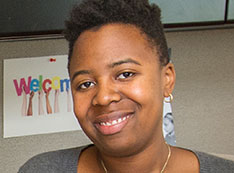
Characterizing the Corrosivity of Nuclear Reactor Materials with Trishelle Copeland-Johnson
Monday, January 24, 2022
CFN user (and CFN UEC Chair) Trishelle Copeland-Johnson discusses her work into metal alloys for use in molten salt nuclear reactors.
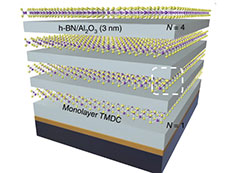
New Atomically-Thin Material Could Improve Efficiency of Light-Based Tech
Monday, January 10, 2022
New research aims to make semiconductor chips more efficient, applicable, and scalable.
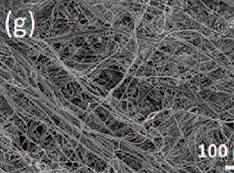
Dry Heat Disinfecting of N95 Masks Works, Preserves Fit
Wednesday, January 5, 2022
Study details published in PLOS ONE could serve as a guide to practical, safe reuse of N95s
2021

Top-10 Areas of Amazing Science at Brookhaven Lab in 2021
Wednesday, December 29, 2021
Annual roundup of research hits showcases wide-ranging impacts on science and society
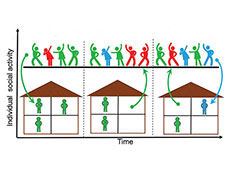
New Model Accurately Describes COVID-19 Waves and Plateaus
Tuesday, December 14, 2021
Model shows COVID-19 will be endemic, sticking around like the flu and the common cold.
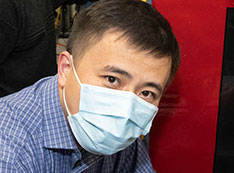
Brookhaven Lab Awarded $8M for Electric Vehicle Battery Research
Wednesday, December 8, 2021
Materials science studies aim to improve anodes, cathodes, and electrolytes to reduce EV battery size and cost while increasing power, range, and safety.
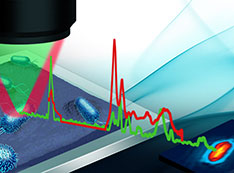
Brookhaven Lab and Small Business Partner to Advance Characterization Tools
Wednesday, November 10, 2021
Center for Functional Nanomaterials scientists are developing environmental cells for imaging and spectroscopy instruments.
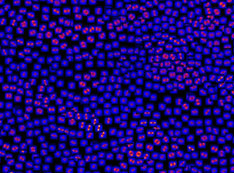
Physics on Autopilot
Wednesday, November 10, 2021
Scientists apply artificial intelligence and machine learning to automate experiments.
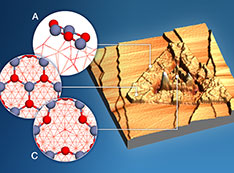
Converting Methane to Methanol—With and Without Water
Monday, November 8, 2021
Studies of common copper-zinc oxide catalyst suggest strategies for improving water-free conversion.
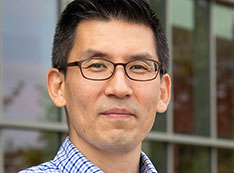
Next-Gen Semiconductor Manufacturing Tech Wins DOE National Pitch Competition
Monday, November 1, 2021
Materials sensitive to extreme-ultraviolet light—developed at the Center for Functional Nanomaterials—could help shrink chip feature sizes.
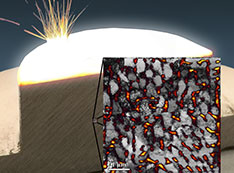
Additively Manufacturing a Better Steel: The Key Could be in Synchrotron X-ray Techniques
Tuesday, October 26, 2021
Scientists uncover connections between the corrosion behavior and underlying structure in a metal widely used in naval applications.
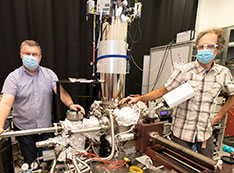
Imaging the Chemical Fingerprints of Molecules
Monday, October 25, 2021
Experiment, theory, and simulation show basic chemical properties are imprinted in atomic force microscope images and may help ID unknown molecules.

To Mask or Not to Mask: Study Provides Mechanism to Test Materials
Thursday, October 21, 2021
In a study that used inorganic, physical and analytical chemistry to mimic respiratory droplets that can carry viruses, researchers demonstrated a mechanism that enables multiple mask materials to be protective.
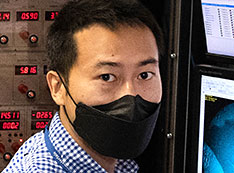
Zhongwei Dai: Exploring the Strange Quantum World of 2D Materials
Thursday, October 21, 2021
The Center for Functional Nanomaterials researcher probes properties of atomically thin materials for quantum information science.

Connecting the Dots Between Material Properties and Qubit Performance
Thursday, September 30, 2021
Scientists identified structural and chemical defects that may be causing quantum information loss—an obstacle to practical quantum computation.

Celebrating National Nanotechnology Day, October 9
Monday, September 27, 2021
The Center for Functional Nanomaterials has planned several activities to raise awareness of the science happening at the 10-9 meter scale.
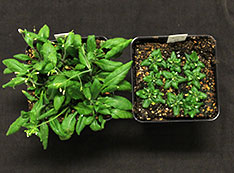
Scientists ID Sterol Essential for Oil Accumulation in Plants
Wednesday, September 22, 2021
Study provides new target for increasing oil content of plant tissues for potential applications in bioenergy, chemical engineering, and nutrition.
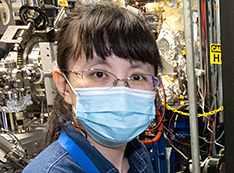
Brookhaven Lab and Euclid Techlabs to Develop Coated Cathodes for Electron-Ion Collider
Monday, September 20, 2021
The protective coatings are intended to extend the lifetime of the materials for applications in nuclear physics facilities.
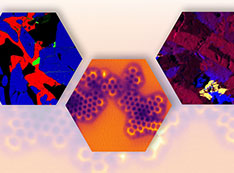
Fueling Scientific Discovery and Communication
Wednesday, September 15, 2021
This year’s virtual National Synchrotron Light Source II & Center for Functional Nanomaterials Users' Meeting featured 12 scientific workshops and two plenary sessions, showing the breadth of scientific discoveries at both national user facilities.
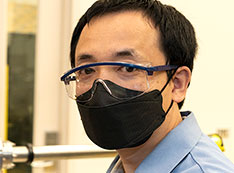
Making High-Quality Materials with Mingzhao Liu
Wednesday, September 15, 2021
The CFN staff scientist is fabricating thin-film materials for applications in solar energy conversion and quantum information science.
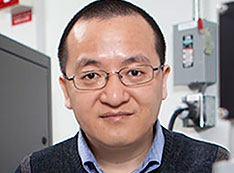
Observing Oxidation at the Atomic Level with Guangwen Zhou
Wednesday, September 15, 2021
The Binghamton University professor uses CFN facilities to study surface and interface reactions in real time and under reaction conditions.
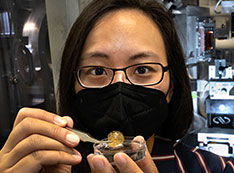
The Mystery of the Flexible Shell
Friday, September 10, 2021
Understanding how a marine animal’s shell dynamically adapts its mechanical properties could inform stimuli-responsive materials design.
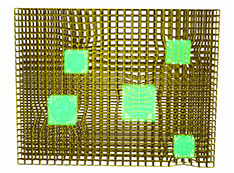
Perovskite LEDs Shine in Metal-Organic Framework
Wednesday, September 8, 2021
These LEDs could provide a low-cost, energy-efficient light source for consumer electronics, detectors, and medical imagers.
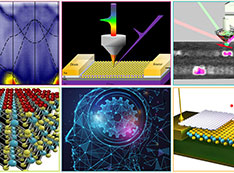
U.S. Department of Energy Announces $61 Million to Advance Breakthroughs in Quantum Information Science
Wednesday, September 8, 2021
The Center for Functional Nanomaterials will develop a platform for assembling, processing, and characterizing layered quantum materials.
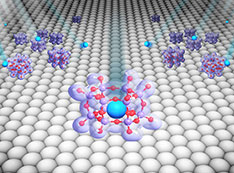
Toward Scaling Up Nanocages to Trap Noble Gases
Wednesday, September 1, 2021
Commercially available materials may be a potentially scalable platform for trapping gases for nuclear energy and other applications.
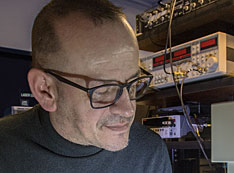
519th Brookhaven Lecture on 'Low-Dimensional' Nanomaterials
Monday, August 23, 2021
Join Mircea Cotlet of the Center for Functional Nanomaterials for this virtual talk Wednesday, Aug. 25, at 4 p.m. on Zoom.

Summer Sundays Offer Virtual Tour of Brookhaven Lab
Friday, August 20, 2021
Missed the live Summer Sundays events? Video replays are available now.
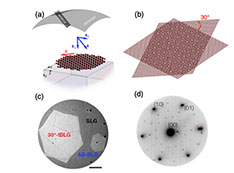
Layered Graphene with a Twist Displays Unique Quantum Confinement in 2-D
Friday, August 20, 2021
Understanding how electrons move in 2-D layered material systems could lead to advances in quantum computing and communication.
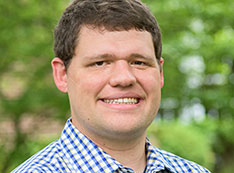
Probing the Powers of Zeolites
Monday, August 16, 2021
University of Delaware’s Mark LaFollette is studying these catalysts at Brookhaven through DOE’s Office of Science Graduate Student Research Program.
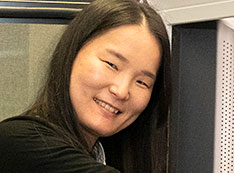
Tracking Pileups on Battery Charging Route to Drive Performance
Wednesday, August 11, 2021
An understanding of this mechanism could help scientists increase the total amount of energy stored by next-generation lithium-ion batteries.
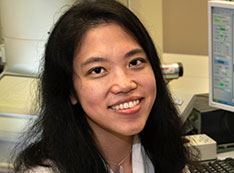
Shih-Ting (Christine) Wang: Designing Materials for Biomedicine
Monday, August 2, 2021
Using DNA-based assembly, the CFN postdoc has assembled functional proteins into ordered lattices and coated nanostructures for drug delivery.
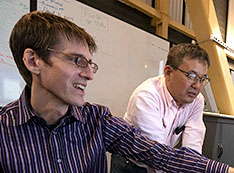
Automatically Steering Experiments Toward Scientific Discovery
Wednesday, July 28, 2021
Scientists have been developing an automated experimental setup of data collection, analysis, and decision making.
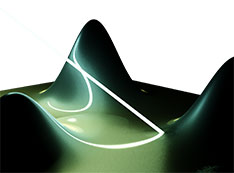
Berkeley Lab's CAMERA Leads International Effort on Autonomous Scientific Discoveries
Wednesday, July 28, 2021
The team’s autonomous method has been deployed at several x-ray and neutron scattering facilities.

Virtual Summer Sundays Return
Friday, July 2, 2021
For Summer Sundays 2021, Brookhaven Lab is hosting three virtual events featuring guided facility tours and live Q&As with scientists.
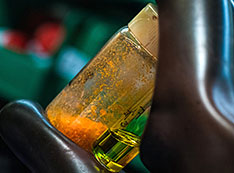
Solar Energy Collectors Grown From Seeds
Tuesday, June 29, 2021
Scientists used tiny pieces of 2-D crystals to grow stable, high-efficiency photovoltaic thin films.

Putting Functional Proteins in Their Place
Friday, June 25, 2021
Using DNA, scientists organized bioactive proteins in desired 2-D and 3-D ordered arrays—promising for structural biology, biomedicine, and more.
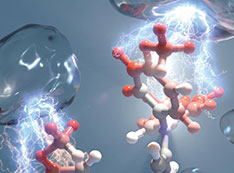
Innovative Process That Removes Key Hurdle for Next-Generation Solar Cells Is Also a Lockbox for Greenhouse Gases
Wednesday, June 23, 2021
Scientists devised a fast, efficient way to dope key layers of perovskite solar cells with carbon dioxide for improved electrical conductivity.

Scientists Discover New Approach to Stabilize Cathode Materials
Thursday, June 3, 2021
Chemists studied an elusive material property and confirmed its ability to stabilize cathodes for next-gene electric vehicle batteries.

Three Brookhaven Scientists to Receive Early Career Research Program Funding
Friday, May 28, 2021
Three scientists at the U.S. Department of Energy’s (DOE) Brookhaven National Laboratory have been selected by DOE’s Office of Science to receive significant funding through its Early Career Research Program.
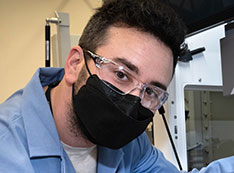
Leveraging DNA to Create Advanced, Usable Materials with Jason Kahn
Friday, May 21, 2021
The CFN staff scientist is conducting research in DNA-based assembly and building a one-of-a-kind automated platform to explore self-assembly processes.
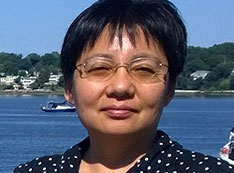
Capturing the Chemistry of Light-Activated Cancer Drugs with Ruomei Gao
Friday, May 21, 2021
The associate professor at SUNY College at Old Westbury has been using CFN facilities to investigate two primary processes of photosensitization.
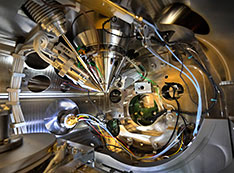
New Dual-Beam Microscope Installed at the Center for Functional Nanomaterials
Tuesday, May 18, 2021
This latest-generation tool has advanced capabilities for preparing and analyzing nanomaterial samples.

Physicists Find a Novel Way to Switch Antiferromagnetism On and Off
Thursday, May 6, 2021
This approach could lead to faster, denser, and more secure memory devices.
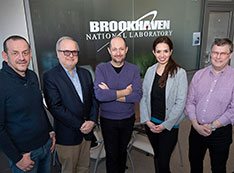
Brookhaven Lab and Northrop Grumman to Further Lab-Industry Collaborations
Monday, May 3, 2021
Through the U.S. Department of Energy’s Technologist in Residence program, they will partner on quantum materials research.
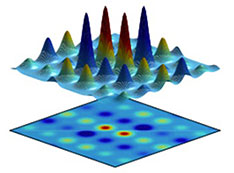
Mapping the Electronic States in an Exotic Superconductor
Wednesday, April 28, 2021
The maps point to the composition range necessary for topological superconductivity, a state that could enable more robust quantum computing.
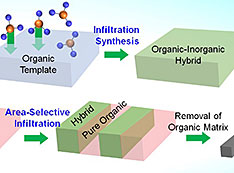
Synthesis Method Expands Material Possibilities
Friday, April 23, 2021
Scientists are making inorganic and organic-inorganic materials with tunable properties for energy, microelectronics, and other applications.

Suppression of COVID-19 Waves Reflects Time-Dependent Social Activity, Not Herd Immunity
Tuesday, April 13, 2021
Scientists developed a new mathematical model for predicting how COVID-19 spreads.
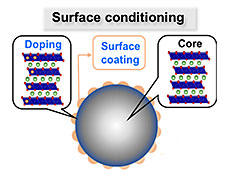
Brookhaven to Receive Department of Energy Funding for Battery Manufacturing
Thursday, April 1, 2021
$1.7 million in federal funding will help scale up the processing technologies for manufacturing lithium-ion battery cathodes.
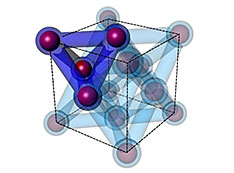
Building Tough 3D Nanomaterials with DNA
Friday, March 19, 2021
The materials can withstand harsh conditions, making them promising for electronics, energy, and other applications.
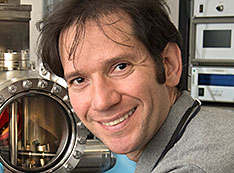
Meet Dr. Anibal Boscoboinik: Staff Scientist, CFN, Brookhaven National Lab
Tuesday, March 9, 2021
Boscoboinik spoke with Nanotech NYC about the local nanotechnology scene.
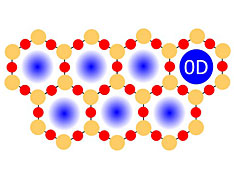
Chemistry Goes Under Cover
Tuesday, March 2, 2021
Scientists have discovered that physically confined spaces can make for more efficient chemical reactions.
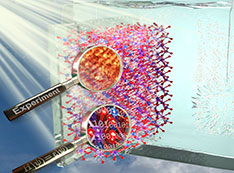
Tuning Electrode Surfaces to Optimize Solar Fuel Production
Thursday, February 18, 2021
Changing the topmost layer of atoms on electrode surfaces can impact the activity of splitting water into oxygen and hydrogen—a clean fuel.
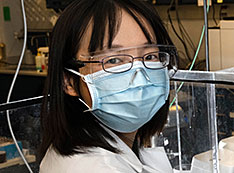
Study Reveals Platinum's Role in Clean Fuel Conversion
Wednesday, February 10, 2021
Identifying specific platinum atoms activated in a water gas shift reaction catalyst could guide the design of less costly efficient catalysts.
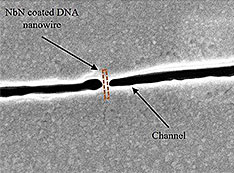
DNA Origami Enables Fabricating Superconducting Nanowires
Tuesday, January 19, 2021
Scientists used DNA self-assembly to make wire-like nanostructures that can conduct electricity without resistance.
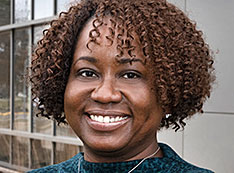
Operating Efficiently and Compliantly with Essala Lowe
Tuesday, January 19, 2021
As the CFN assistant director of operations, Lowe oversees day-to-day administrative functions essential to CFN success.
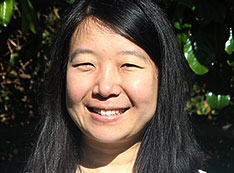
Designing Materials from First Principles with Yuan Ping
Tuesday, January 19, 2021
The UC Santa Cruz professor uses CFN computing resources to run calculations for quantum information science, spintronics, and energy research.

Brookhaven Lab's Top-10 Stories of 2020
Wednesday, January 6, 2021
With all the remarkable changes and challenges that took place in 2020, the U.S. Department of Energy’s Brookhaven National Laboratory had a banner year in science.
2020
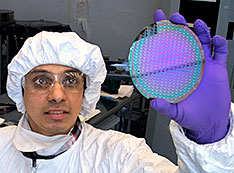
Nikhil Tiwale: Practicing the Art of Nanofabrication
Monday, December 21, 2020
Applying his passions for science and art, the Center for Functional Nanomaterials postdoc is fabricating new microelectronics components.
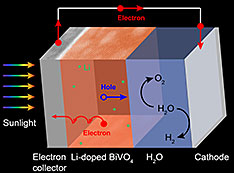
Driving Water Splitting to Create Chemical Fuels
Monday, December 7, 2020
Scientists improved the performance of an electrode material for converting solar energy to hydrogen—an energy-dense and clean-burning fuel.
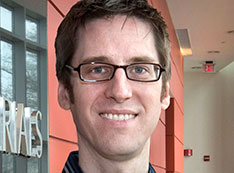
Brookhaven's Kevin Yager Named Oppenheimer Leadership Fellow
Monday, November 30, 2020
Yager, a group leader at the Center for Functional Nanomaterials, is exploring challenges and opportunities for the U.S. Department of Energy.
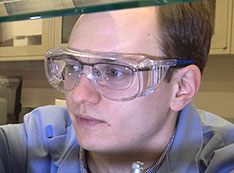
Exploring Blended Materials Along Compositional Gradients
Tuesday, November 24, 2020
A new platform could accelerate the development of blended materials with desired properties.
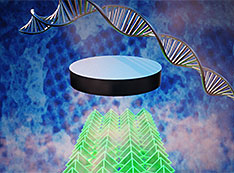
Making 3-D Nanosuperconductors with DNA
Tuesday, November 10, 2020
The tiny architectures, which can conduct electricity without resistance, could find application in quantum computers and sensors
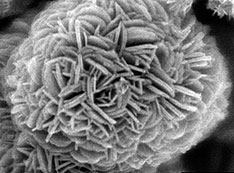
Lithium-Ion Battery Research "Flowers"
Thursday, November 5, 2020
Scientists improved the performance of a battery electrode material with a unique flower-shaped nanostructure.
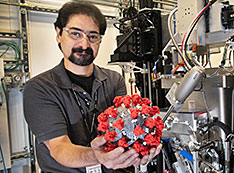
Steady Progress in the Battle Against COVID-19
Wednesday, October 7, 2020
Update on Brookhaven Lab’s research efforts aimed at thwarting the novel SARS-CoV-2 virus responsible for a global pandemic
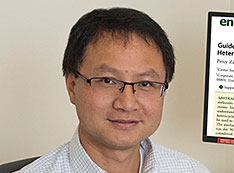
Decoding the Structure of Petroleum with Yunlong Zhang
Tuesday, September 22, 2020
ExxonMobil chemist and CFN user Zhang is characterizing molecules in petroleum with high-resolution atomic force microscopy.
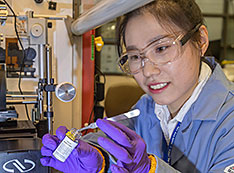
Automating 2-D Material Exfoliation with Suji Park
Tuesday, September 22, 2020
Park, a CFN staff researcher, is designing and building an automated system to generate high-quality ultrathin “flakes,” which can be stacked into layered structures that are essentially new materials.

Sharing Science Online: Watch Brookhaven's Summer Sundays Series
Tuesday, September 15, 2020
Missed the virtual Summer Sundays series? Check out the replays for scientist Q&As and video tours of NSLS-II, CFN, and RHIC.

White House Office of Technology Policy, National Science Foundation and Department of Energy Announce Over $1 Billion in Awards for Artificial Intelligence and Quantum Information Science Research Institutes
Wednesday, August 26, 2020
Brookhaven Lab will lead one of five National Quantum Information Science Research Centers.
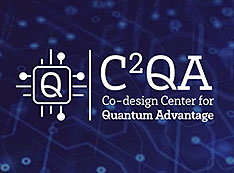
Brookhaven Lab to Lead Quantum Research Center
Wednesday, August 26, 2020
Through hardware-software co-design, the center—one of five awarded by the U.S. Department of Energy—will advance quantum computing.

Brookhaven Lab Partners in New $40 M Research Center to Convert Sunlight to Liquid Fuels
Wednesday, August 5, 2020
Scientists aim to advance the design and performance of hybrid molecular-semiconductor photoelectrodes by integrating molecular catalysts with semiconductor surfaces

Department of Energy funds milestone North Carolina-led initiative to advance solar energy research
Friday, July 31, 2020
Brookhaven Lab will bring expertise in catalysis and artificial photosynthesis and access to world-class research tools to collaborative research on solar-to-fuel energy conversion.
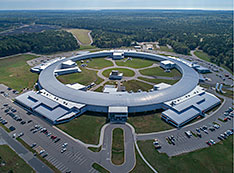
Upcoming Webinar—See The Light: The National Synchrotron Light Source and Other Tools of Discovery
Tuesday, July 21, 2020
New York City-based Urban Tech Hub will continue its summer webinar series with “See The Light: The National Synchrotron Light Source and Other Tools of Discovery” on Thursday, July 23.
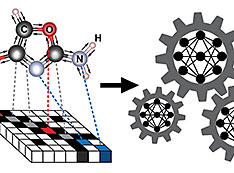
Predicting X-ray Absorption Spectra from Graphs
Thursday, July 16, 2020
Scientists built a machine learning model that can rapidly predict how atoms absorb x-rays for materials science research.
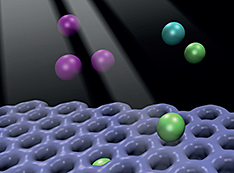
Brookhaven and Forge Nano to Mature Noble Gas-Trapping Technology
Thursday, July 9, 2020
Through DOE’s Technology Commercialization Fund, the national lab-startup team will develop “nanocages” for nuclear applications.
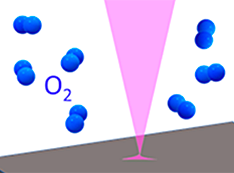
Engineers Advance Insights on Black Phosphorus as a Material for Future Ultra-low Power Flexible Electronics
Tuesday, July 7, 2020
Scientists are the first to observe the atomic-scale reaction of oxygen and black phosphorous (BP), gaining insight on how BP degrades in air.
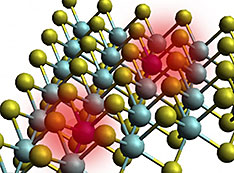
Atomically Thin Magnets for Next Generation Spin and Quantum Electronics
Tuesday, June 30, 2020
Scientists synthesized an atomically thin magnetic semiconductor that could enable smaller and faster electronics.

Apart Yet Together: Virtual 2020 NSLS-II & CFN Users' Meeting
Friday, June 26, 2020
A record-breaking number of attendees gathered virtually at the NSLS-II & CFN Users’ Meeting to discuss the most recent developments in photon science and nanoscience.

Peering into Functioning Batteries with Sooyeon Hwang
Thursday, May 21, 2020
With electron microscopes, Hwang—a CFN staff scientist— characterizes the structure and chemistry of operating battery electrode materials.
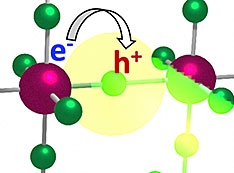
Organic Spacers Improve LED Performance
Thursday, May 14, 2020
Sandwiching a 2-D light-emitting layer between ring-shaped carbon-based compounds significantly improved device efficiency and brightness.
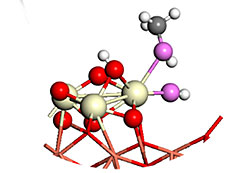
Water is Key in Catalytic Conversion of Methane to Methanol
Thursday, April 30, 2020
New atomic-level details of reaction dynamics could aid conversion of natural gas component to an easy-to-transport liquid fuel/industrial chemical feedstock
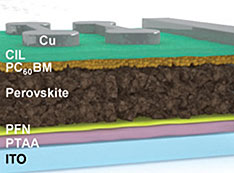
Stabilizing High-Efficiency Solar Cells
Wednesday, April 29, 2020
A new processing method helps the devices maintain their initial efficiency over time under continuous exposure to light or heat.
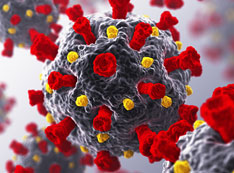
Brookhaven Lab Mobilizes Resources in Fight Against COVID-19
Monday, April 6, 2020
Brookhaven Lab scientists and staff combine expertise across disciplines and use Lab’s unique facilities to address drug development, medical supplies, information processing, and more
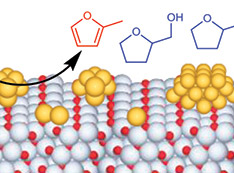
Upgrading Biomass with Selective Surface-Modified Catalysts
Thursday, March 26, 2020
Loading single platinum atoms on titanium dioxide promotes the conversion of a plant derivative into a potential biofuel.
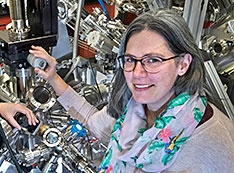
Atomic Defect Lines Suppress Deactivation of Iron Oxide Catalysts
Friday, March 20, 2020
A structure based on the low-cost, earth-abundant metal iron may be active enough to promote desired reactions without becoming “poisoned.”
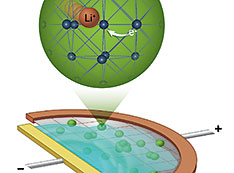
Chasing Lithium Ions on the Move in a Fast-Charging Battery
Thursday, March 12, 2020
Atomic distortions emerging in the electrode during operation provide a “fast lane” for the transport of lithium ions.
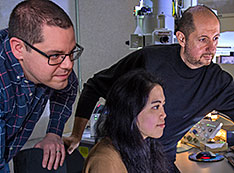
Protecting DNA Origami for Anti-Cancer Drug Delivery
Monday, March 9, 2020
Scientists designed tunable molecular coatings to promote the structural integrity and functionality of 3-D DNA nanostructures for biomedicine.
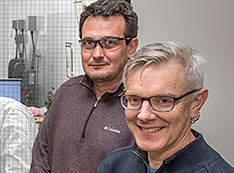
Gold in Limbo Between Solid and Melted States
Monday, March 2, 2020
Laser-induced melting occurs nonuniformly in polycrystalline gold thin films—a finding that may be important for precision part micromachining.
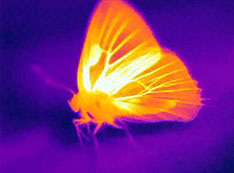
Beating the Heat in the Living Wings of Butterflies
Monday, February 3, 2020
Study shows butterflies regulate their wing temperature through structural and behavioral adaptations.

CFN User Spotlight: Nik Singh Seeks Better Battery Materials
Wednesday, January 15, 2020
In his quest to find alternatives to lithium-ion batteries, Singh—a senior scientist at the Toyota Research Institute of North America—uses state-of-the-art electron microscopes at the CFN to perform material characterizations of anode and electrolyte components and their interfaces.
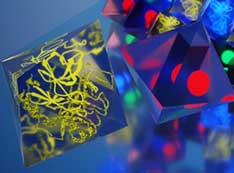
Nano-objects of Desire: Assembling Ordered Nanostructures in 3-D
Monday, January 13, 2020
A new DNA-programmable nanofabrication platform organizes inorganic or biological nanocomponents in the same prescribed ways.

Top-10 Science and Technology Achievements of 2019
Monday, January 6, 2020
From building a quantum network testbed to delving deeper into proton spin, here are the Lab’s top 10 advances of the year.
2019
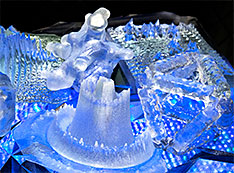
Season's Greetings
Monday, December 23, 2019
On behalf of Brookhaven Science Associates, we wish you peace and the excitement of discovery this holiday season and in the new year.
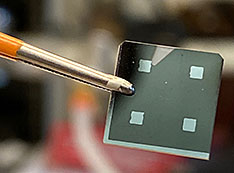
Camouflage Made of Quantum Material Could Hide You From Infrared Cameras
Thursday, December 19, 2019
Brookhaven scientist Jurek Sadowski and university collaborators discovered a material that can mask its heat properties from infrared cameras.
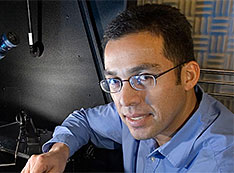
Meet Dr. Fernando Camino: Staff Scientist, CFN, Brookhaven National Lab
Tuesday, December 10, 2019
Meet Fernando Camino, a staff scientist at the Center for Functional Nanomaterials.
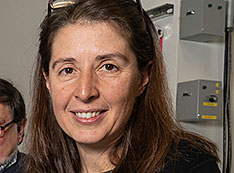
Meet Alessandra Colli: Engineering Improvements in 3-D-printed Metals
Tuesday, December 3, 2019
Alessandra Colli seeks to merge materials risk analysis with data collected at world-class science tools to improve safety, reliability, and opportunities in metal additive manufacturing
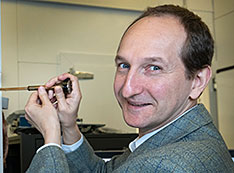
Dmitri Zakharov Recognized with the 2019 Chuck Fiori Award
Thursday, November 21, 2019
The award honors his contributions to environmental transmission electron microscopy at Brookhaven’s Center for Functional Nanomaterials.
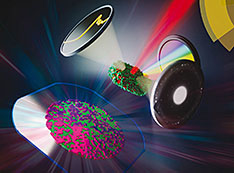
Turning Up the Heat to Create New Nanostructured Metals
Wednesday, November 20, 2019
The metallic thin films with 3-D interlocking nanostructures could be used in catalysis, energy storage, and biomedical sensing.
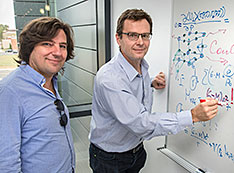
The Secret Behind Crystals that Shrink when Heated
Friday, November 1, 2019
Discovery yields new quantitative description of unusual behavior relevant to materials used in electronics, medicine, telecommunications, and more
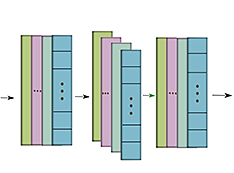
Machine-Learning Analysis of X-ray Data Picks Out Key Catalytic Properties
Tuesday, October 22, 2019
Application of novel artificial intelligence approach identifies active phase of catalyst that converts carbon dioxide to methane.
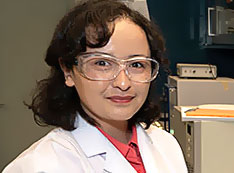
Chemistry Postdoc Receives Battery500 Young Investigator Award
Thursday, October 10, 2019
Zulipiya Shadike will receive $50K in funding for research aimed at improving batteries for electric vehicles
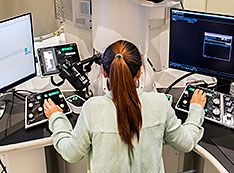
Researchers Think Small to Make Progress Toward Better Fuel Cells
Thursday, October 3, 2019
UPenn grad student Jennifer Lee imaged a new fuel cell catalyst with hi-res electron microscopes at the Center for Functional Nanomaterials.
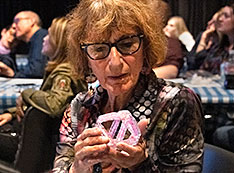
PubSci at the Parrish Merges Science, Art, and Music
Wednesday, September 18, 2019
At an event held on Sept. 6, a scientist, artists, and composers discussed their approaches to representing nanoscience data.
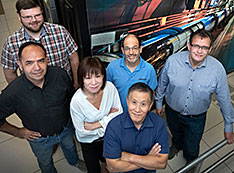
Toward Collaborative Scientific Computing
Wednesday, September 11, 2019
Brookhaven is provisioning a suite of software tools and enabling technologies to enable collaboration among geographically dispersed scientists.
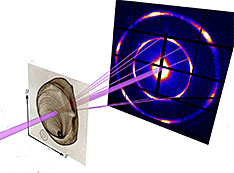
Smarter Experiments for Faster Materials Discovery
Wednesday, August 28, 2019
Scientists created a new AI algorithm for making measurement decisions; autonomous approach could revolutionize scientific experiments
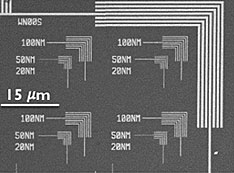
Enhancing Materials for Hi-Res Patterning to Advance Microelectronics
Tuesday, August 27, 2019
Scientists created organic-inorganic materials for transferring ultrasmall features into silicon with a high aspect ratio.
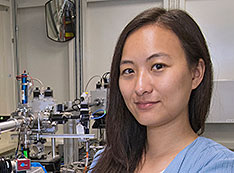
CFN Staff Spotlight: Esther Tsai Brings Expertise in X-ray Imaging
Tuesday, August 27, 2019
In addition to conducting her own research, Esther Tsai—a staff member in the CFN Electronic Nanomaterials Group—provides user support at two x-ray scattering beamlines that the CFN operates in partnership with NSLS-II.

Brookhaven Lab and University of Delaware Begin Joint Initiative
Monday, August 12, 2019
The two-year initiative will bring together scientists from both institutions to study rice soil chemistry and quantum materials.
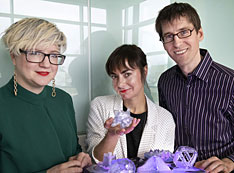
Transforming Advanced Nanoscience Data into Interactive Art
Monday, July 29, 2019
A scientist, an artist, and a computer music professor combined 3-D printing, sound, and virtual reality to represent nanoscience data.

Exploring the Ultra Small: Tour CFN on July 28
Wednesday, July 24, 2019
On July 28 visit the Center for Functional Nanomaterials, where scientists study materials as tiny as a billionth of a meter.
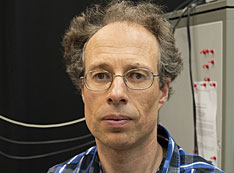
Imaging the Chemical Structure of Individual Molecules, Atom by Atom
Monday, July 22, 2019
An imaging guide that Brookhaven and ExxonMobil scientists made to identify petroleum contaminants could lead to cleaner, more efficient fuels.
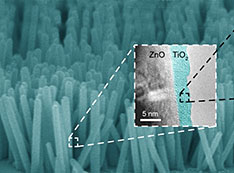
Optimizing the Growth of Coatings on Nanowire Catalysts
Monday, July 8, 2019
A chemical surface treatment boosts the catalytic activity of the wire-looking nanostructures for a key reaction in solar fuel production.
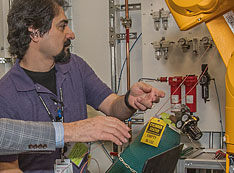
The Best is Yet to Come: The 2019 NSLS-II/CFN Users' Meeting
Friday, July 5, 2019
Researchers from various scientific fields came together to discuss their newest results and projects at Brookhaven Lab
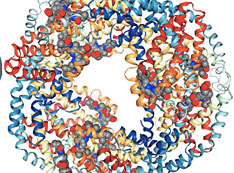
Hybrid Nanostructure Steps Up Light-Harvesting Efficiency
Wednesday, June 12, 2019
Energy is transferred through the structure in a way that boosts its response to light, showing promise for solar cell applications.
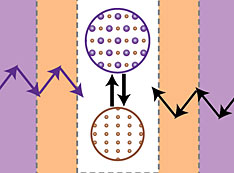
Finding the Cause of Capacity Loss in a Metal-Oxide Battery Material
Tuesday, May 21, 2019
The formation and thickening of internal and surface barriers during battery charge and discharge cycles limits electrochemical reactions.

Brookhaven's Mircea Cotlet Named a Battelle "Inventor of the Year"
Tuesday, May 21, 2019
Cotlet is a materials scientist at the Center for Functional Nanomaterials, where he studies light-matter interactions in hybrid nanomaterials.
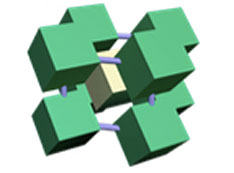
Nanoscale Sculpturing Leads to Unusual Packing of Nanocubes
Friday, May 17, 2019
Brookhaven and Columbia scientists found that cubic nanoparticles surrounded by thick DNA shells pack in a never-before-seen “zigzag” pattern.
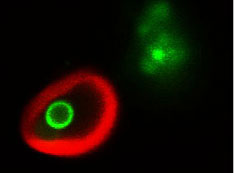
Plant Cells Eat Their Own … Membranes and Oil Droplets
Monday, April 29, 2019
Study IDs dual role for “autophagy” in building and breaking down plant oils. Manipulating the process could drive up oil accumulation in bioenergy crops.
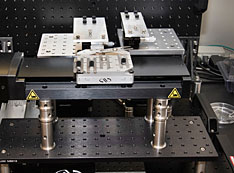
Building a Printing Press for New Quantum Materials
Monday, April 22, 2019
Scientists at Brookhaven’s Center for Functional Nanomaterials are building a robotic system to accelerate quantum materials discovery.
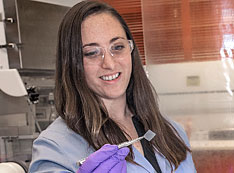
Samantha Nowak: From CFN User to CFN Postdoc
Friday, April 5, 2019
The chemist was a PhD student user of the Center for Functional Nanomaterials (CFN) and is now a CFN postdoc researching polymer self-assembly.
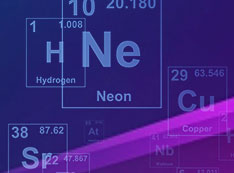
Our Favorite Elements
Wednesday, April 3, 2019
In honor of the 150th anniversary of the chart of the chemical elements, the United Nations has declared 2019 the International Year of the Periodic Table. To celebrate, we’ve asked Lab staff to talk about their favorite element and why it’s important to them. Check out our new interactive periodic table to see what they said!
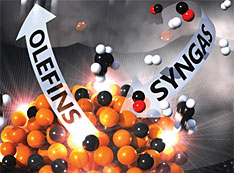
NETL Develops an Improved Process for Creating Building Blocks for $200 Billion Per Year Chemical Industry Market
Wednesday, March 6, 2019
National Energy Technology Laboratory researchers came to Brookhaven’s NSLS-II and CFN to characterize a new catalyst.
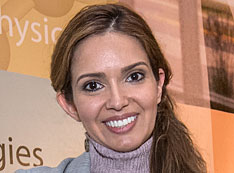
CFN Staff Spotlight: Priscilla Antunez Guides Partnerships that Advance Nanoscience to Impact Society
Friday, January 25, 2019
Priscilla Antunez, the new assistant director for strategic partnerships at the CFN, is helping scientists establish partnerships with universities, other research labs, and industry to increase the impact of their research.
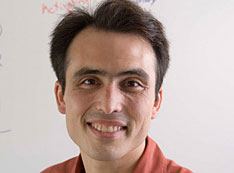
CFN User Spotlight: Morgan Huse Measures the Mechanical Forces Generated by Immune Cells
Friday, January 25, 2019
Immunologist Morgan Huse of Memorial Sloan Kettering Cancer Center takes advantage of the microfabrication tools and electron microscopes at the CFN to generate micropatterned elastic surfaces composed of flexible micropillars that he then uses to measure the mechanical forces exerted by T cells.

Brookhaven's CFN Celebrates Decade of Discovery
Wednesday, January 16, 2019
The Center for Functional Nanomaterials marked its first “Decade of Discovery” with a day-long celebration.

Top 10 Discoveries of 2018
Monday, January 7, 2019
From uncovering mysteries of the universe to building better batteries, here are Brookhaven Lab’s top 10 discoveries of 2018.

Carrying and Releasing Nanoscale Cargo with "Nanowrappers"
Thursday, January 3, 2019
Scientists made hollow nanosized boxes with corner holes, demonstrating how these “nanowrappers” can carry and release DNA-coated nanoparticles.
2018
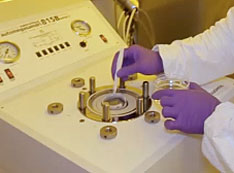
Creating Nanoscale Patterns at Record Resolution: An Instructional Video
Thursday, December 20, 2018
Scientists from Brookhaven’s nanocenter describe how a technique they developed can be used to define single-digit nanometer patterns.
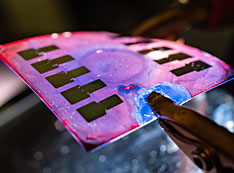
Rice Engineers Give Organic Photovoltaics New Properties
Thursday, November 8, 2018
Researchers at Rice University have developed flexible organic solar cells.
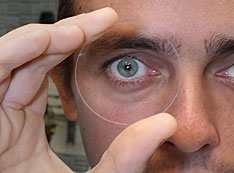
"Invisible Glass" Wins 2018 Create the Future Design Contest Grand Prize
Monday, October 15, 2018
Scientists at the Center for Functional Nanomaterials developed a technique for making nonreflecting glass, silicon, and plastic surfaces.
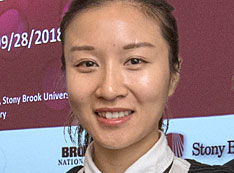
Bingjie Zhang Wins 14th Annual Mow Shiah Lin Scholarship
Wednesday, October 10, 2018
Stony Brook University student recognized for contributions to battery research.
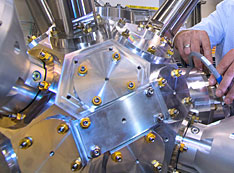
Single Atoms Break Carbon's Strongest Bond
Tuesday, October 2, 2018
Scientists discovered that single atoms of platinum can break carbon-fluorine bonds, one of the strongest known chemical bonds.
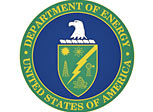
Department of Energy Announces $218 Million for Quantum Information Science
Monday, September 24, 2018
Brookhaven will lead and contribute to DOE-funded research aimed at advancing next-gen technologies in computing, sensing, and other areas.
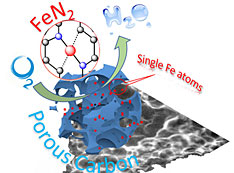
Catalyst Advance Could Lead to Economical Fuel Cells
Friday, August 31, 2018
New method for developing low-cost, single-atom catalysts could make clean energy technology more economically viable.
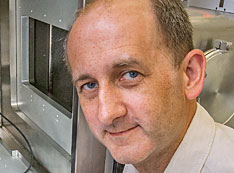
CFN Scientist Spotlight: Dmytro Nykypanchuk Explores How DNA Can Enable the Rational Design of Nanomaterials
Tuesday, August 28, 2018
Materials scientist Dmytro Nykypanchuk of the Soft and Bio Nanomaterials Group at the CFN takes advantage of the specificity and programmability of DNA to guide the nanoscale self-assembly of materials whose structures evolve in response to environmental cues or external stimuli.
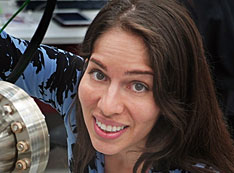
CFN User Spotlight: Jennifer Carpena-Núñez Studies the Fundamentals of Carbon Nanotube Growth
Tuesday, August 28, 2018
Chemical physicist Jennifer Carpena-Núñez—a postdoctoral research associate at the CFN and U.S. Air Force Research Laboratory—synthesizes and characterizes cylindrical structures whose strength, weight, flexibility, and conductivity are ideal for next-generation materials.
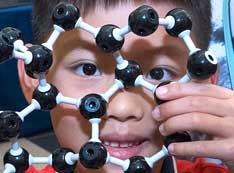
Summer Sundays Connect Long Island to World-class Science
Monday, August 20, 2018
Brookhaven Lab hosted more than 4,500 community members at its annual open house events.
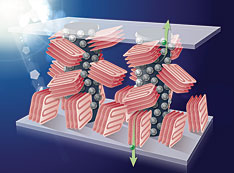
Adding an Inert Polymer to Plastic Solar Cells Enables High Efficiency and Easy Production
Friday, July 6, 2018
Scientists from Brookhaven Lab and Stony Brook University discovered that adding a common inert polymer to plastic solar cells improves their efficiency and stability.

High-School Students Studying Carbon-Based Nanomaterials for Cancer Drug Delivery Visit Brookhaven Lab's Nanocenter
Monday, July 2, 2018
Participants in Stony Brook University’s (SBU) High School Women in Science and Engineering program brought the graphene oxide microspheres they synthesized at SBU to the Center for Functional Nanomaterials for imaging via electron microscopy.
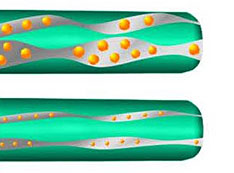
Tripling the Energy Storage of Lithium-Ion Batteries
Thursday, June 14, 2018
Scientists have synthesized a new cathode material from iron fluoride that surpasses the capacity limits of traditional lithium-ion batteries.
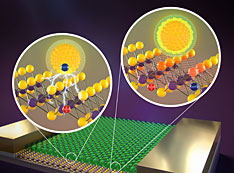
Understanding the Generation of Light-Induced Electrical Current in Atomically Thin Nanomaterials
Wednesday, May 23, 2018
Scientists added an imaging capability to Brookhaven Lab’s Center for Functional Nanomaterials that could provide the optoelectronic information needed to improve the performance of devices for power generation, communications, data storage, and lighting.
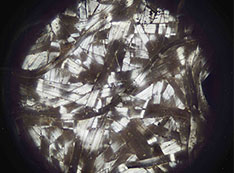
Researchers Mimic Comet Moth's Silk Fibers to Make "Air-conditioned" Fabric
Tuesday, May 22, 2018
Columbia Engineering team working with CFN researchers discovers and learns to mimic comet moth fibers’ exceptional capabilities to reflect sunlight.
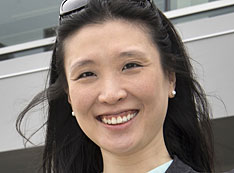
Engineering Professor Karen Chen-Wiegart Receives NSF CAREER Award for Her Research at SBU and BNL
Monday, May 14, 2018
Karen Chen-Wiegart, assistant professor at Stony Brook University and researcher at the National Synchrotron Light Source II, has been awarded the 2018 National Science Foundation’s Faculty Early Career Development Award.
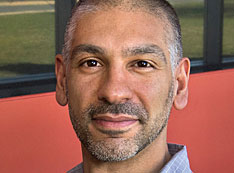
Brookhaven Lab's Matthew Sfeir Named a Battelle "Inventor of the Year"
Thursday, May 3, 2018
Award recognizes his research at the Center for Functional Nanomaterials to develop enabling technologies for next-generation electronic devices, particularly in the areas of thin-film optics and solar cells.
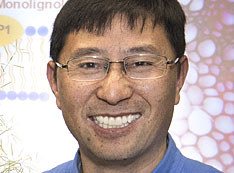
New Details of Molecular Machinery that Builds Plant Cell Wall Components
Monday, April 30, 2018
Study reveals how a membrane protein within plant cells serves as a scaffold to organize three key enzymes involved in building the cell’s exterior support.

CFN Scientist Spotlight: Ashley Head Brings Surface Studies out of the Realm of Physics into Chemistry
Tuesday, April 24, 2018
Chemist Ashley Head of the Interface Science and Catalysis Group at the CFN studies the interesting chemical processes and phenomena that take place on surfaces—an understanding relevant to designing efficient catalysts, developing more sophisticated gas masks for soldiers, and other applications.
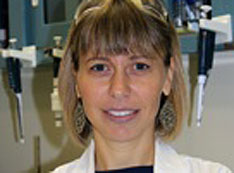
CFN User Spotlight: Laura Fabris Develops Nanoparticle-Based Tags to Detect Cancer and Viruses at the Single-Cell Level
Tuesday, April 24, 2018
Physical chemist Laura Fabris—an associate professor in the Materials Science and Engineering Department at Rutgers University and principal investigator of the Fabris NanoBio Group—uses the transmission electron microscopes at the CFN to visualize nanoparticles and understand how to optimize their morphology to improve clinical diagnoses.
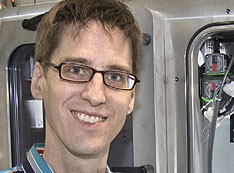
Researchers Engineer New Pathways for Self-Assembled Nanostructures
Wednesday, April 11, 2018
Scientists used a new method called “Pathway Engineering” to direct the self-assembly process of molecules into novel nanostructures.
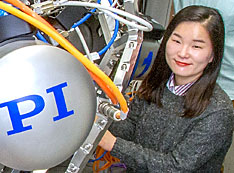
Converting CO2 into Usable Energy
Thursday, March 1, 2018
Scientists show that single nickel atoms are an efficient, cost-effective catalyst for converting carbon dioxide into useful chemicals.
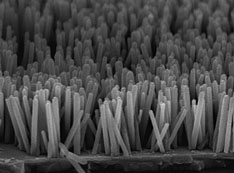
Atomic Flaws Create Surprising, High-Efficiency UV LED Materials
Tuesday, February 6, 2018
A team of scientists from Brookhaven National Laboratory and Stony Brook University has discovered that subtle imperfections can dramatically increase the efficiency and ultraviolet (UV) light output of certain LED materials.
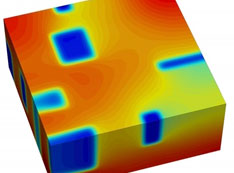
Surprising Discovery Could Lead to Better Batteries
Friday, January 12, 2018
Scientists have observed how lithium moves inside individual nanoparticles that make up batteries. The finding could help companies develop batteries that charge faster and last longer.
2017

2017's Top-10 Discoveries and Scientific Achievements at Brookhaven National Laboratory
Wednesday, December 27, 2017
From unraveling new details of the particle soup that filled the early universe to designing improvements for batteries, x-ray imaging, and even glass, this year’s Top-10 achievements at Brookhaven Lab span a spectrum of size scales and fields of science.
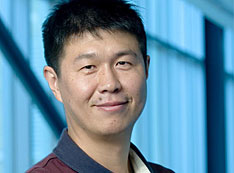
Q&A with CFN User Xiaowei Teng
Wednesday, December 20, 2017
Teng of the University of New Hampshire brings his research to design new types of nanostructured materials for energy conversion and storage applications to Brookhaven Lab’s Center for Functional Nanomaterials (CFN).
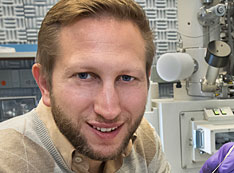
Accelerating the Self-Assembly of Nanoscale Patterns for Next-Generation Materials
Wednesday, December 13, 2017
Scientists have come up with a way to massively speed up the ordering process for self-assembling materials. The resulting ultra-small, well-ordered patterns could be used in the fabrication of microelectronics, antireflective surfaces, magnetic data storage systems, and fluid-flow devices.
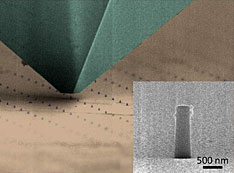
Scientists Engineer Nanoscale Pillars to Act Like Memory Foam
Tuesday, December 12, 2017
Scientists from Brookhaven Lab and the University of Connecticut have developed a customizable nanomaterial that combines metallic strength with a foam-like ability to compress and spring back. This organic-inorganic hybrid material could pave the way to new nanoelectromechanical devices.
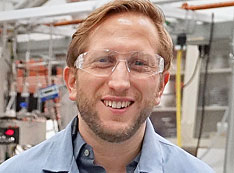
CFN Scientist Spotlight: Gregory Doerk Guides the Self-Assembly of Materials to Make Diverse Nanoscale Patterns
Thursday, December 7, 2017
Gregory Doerk—a materials scientist in the Electronic Nanomaterials Group at CFN—directs the self-assembly of chains of polymers linked together by chemical bonds into different nanostructures, which could be leveraged for many applications.
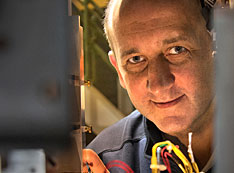
Nanoscientists Develop New Material with Controllable Pores
Monday, December 4, 2017
Scientists at the University at Buffalo have synthesized a new material with nanoscale, controllable pores. They analyzed the material’s structure at the National Synchrotron Light Source II, using a beamline built in partnership with the Center for Functional Nanomaterials.
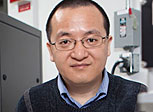
New Research Finds Cause of Alloy Weakness
Thursday, November 30, 2017
A deep look at atomic patterns reveals why alloys don’t meet their full potential strength.
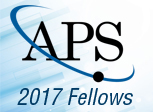
Five Brookhaven Lab Scientists Named 2017 American Physical Society Fellows
Wednesday, November 22, 2017
Anatoly Frenkel, Morgan May, Rachid Nouicer, Eric Stach, and Peter Steinberg were recognized for their outstanding contributions to astrophysics, materials physics, and nuclear physics.

Designing New Metal Alloys Using Engineered Nanostructures
Tuesday, November 21, 2017
Stony Brook assistant professor Jason Trelewicz uses the electron microscopy and computing resources at Brookhaven Lab's Center for Functional Nanomaterials to characterize nanoscale structures in metals mixed with other elements. The goal of his research is to achieve unprecedented properties in classical materials for use in everything from aerospace and automotive components to consumer electronics and nuclear reactors.
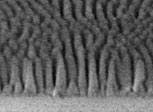
Making Glass Invisible: A Nanoscience-Based Disappearing Act
Tuesday, October 31, 2017
Glare-free cell phone screens, ultra-transparent windows, and more efficient solar cells—these are some of the applications that could be enabled by texturing glass surfaces with tiny nanoscale features that reduce surface reflections to nearly zero.
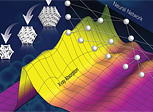
Scientists Use Machine Learning to Translate 'Hidden' Information that Reveals Chemistry in Action
Tuesday, October 10, 2017
New method allows on-the-fly analysis of how catalysts change during reactions, providing crucial information for improving performance.

Q&A with CFN User Vinod Menon
Friday, August 25, 2017
Menon—a professor at the City College of New York (CCNY) and principal investigator at CCNY’s Laboratory for Nano and Micro Photonics—uses the optical spectroscopy and microscopy capabilities at Brookhaven Lab’s Center for Functional Nanomaterials (CFN) to study light-matter interactions at the nanoscale.
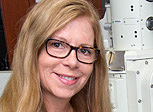
Q&A with CFN Staff Member Gwen Wright
Friday, August 18, 2017
Since joining Brookhaven Lab’s Center for Functional Nanomaterials (CFN) five years ago, Wright has been providing training to CFN staff members and users who need access to the cleanroom and scanning electron microscope lab.

Meet CFN Director Chuck Black
Wednesday, August 9, 2017
Meet Chuck Black, the director of Brookhaven's Center for Functional Nanomaterials (CFN). Black leads CFN with the mission of advancing the science of nanomaterials to impact society, and runs the facility under the view that nanoscience is an art form.

Welcoming a Bright Future: 2017 NSLS-II and CFN Joint Users' Meeting
Tuesday, July 25, 2017
The event theme of this year’s Joint User’s Meeting of the National Synchrotron Light Source II and the Center for Functional Nanomaterials, two U.S. Department of Energy Office of Science User Facilities located at Brookhaven National Laboratory, resonated well with the future research at both facilities: “Making and Measuring in 4-Dimensions.

Summer Sundays: Explore the Ultra Small on July 23
Friday, July 21, 2017
Visit the Lab's Center for Functional Nanomaterials to discover the unusual and wonderful things that happen at the tiniest of sizes. All welcome, 10 a.m. to 3 p.m. Visitors 16 and older must bring a photo ID.
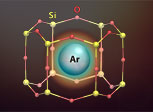
Studying Argon Gas Trapped in Two-Dimensional Array of Tiny "Cages"
Monday, July 17, 2017
For the first time, scientists have trapped a noble gas in a two-dimensional porous structure at room temperature. This achievement will enable detailed studies of individual gas atoms in confinement—research that could inform the design of new materials for gas separation and nuclear waste remediation.
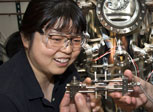
New Efficient, Low-Temperature Catalyst for Converting Water and CO to Hydrogen Gas and CO2
Thursday, June 22, 2017
Low-temperature “water gas shift” reaction produces high levels of pure hydrogen for potential applications, including fuel cells
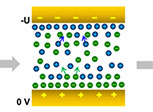
Scientists Demonstrate New Real-Time Technique for Studying Ionic Liquids at Electrode Interfaces
Tuesday, May 16, 2017
This electron microscope-based imaging technique could help scientists optimize the performance of ionic liquids for batteries and other energy storage devices.
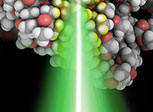
Scientists Set Record Resolution for Drawing at the One-Nanometer Length Scale
Friday, April 28, 2017
Using a specialized electron microscope outfitted with a pattern generator, scientists turned an imaging instrument into a lithography tool that could be used to create and study materials with new properties.

Q&A with CFN User Davood Shahrjerdi
Tuesday, April 18, 2017
NYU’s Shahrjerdi has been using facilities at Brookhaven Lab’s Center for Functional Nanomaterials (CFN) to fabricate and characterize nano-bioelectronic devices that combine the unique properties of emerging nanomaterials with advanced silicon-based electronics.
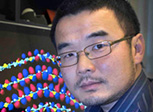
Q&A with CFN Scientist Qin Wu
Friday, April 14, 2017
Wu, a theoretical chemist at Brookhaven Lab’s Center for Functional Nanomaterials (CFN), performs calculations and simulations and constructs models that provide a fundamental understanding of the structures, dynamics, and properties of chemical systems.
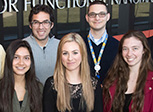
High School Students Study Nanoparticles via Video
Friday, April 7, 2017
Brookhaven nanocenter researcher offers research experience for local young women

Next-Generation Software Supports Explorations Beyond the Nanoworld into the Intramolecular Picoworld
Thursday, March 30, 2017
Brookhaven physicist Percy Zahl has recently upgraded his data acquisition and visualization software for scanning probe microscopy, enhancing scientists’ ability to observe and control individual atoms and molecules.
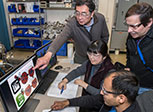
Chemists ID Catalytic 'Key' for Converting CO2 to Methanol
Thursday, March 23, 2017
Results from experiments and computational modeling studies that definitively identify the “active site” of a catalyst commonly used for making methanol from CO2 will guide the design of improved catalysts for transforming a pollutant to useful chemicals.
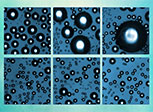
Water-Repellent Nanotextures Found to Have Excellent Anti-Fogging Abilities
Thursday, March 2, 2017
The nanotextures—inspired by cone-shaped structures found on the surface of cicada wings—could inform new designs for materials prone to fogging, such as car and aircraft windshields.
2016
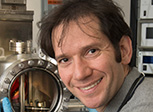
Q&A with CFN Scientist Anibal Boscoboinik
Thursday, December 29, 2016
Using surface-science tools and a 2D model system, Boscoboinik studies catalysis in nanoporous zeolites, which speed up reactions in many industrial processes.
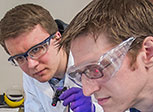
Nanoscale 'Conversations' Create Complex, Multi-Layered Structures
Thursday, December 22, 2016
New technique leverages controlled interactions across surfaces to create self-assembled materials with unprecedented complexity

Scientists Boost Catalytic Activity for Key Chemical Reaction in Fuel Cells
Friday, December 16, 2016
New catalysts containing platinum and lead could improve the efficiency of fuel cells—a promising technology for producing clean energy.

Scientists Track Chemical and Structural Evolution of Catalytic Nanoparticles in 3D
Thursday, December 8, 2016
Up-close, real-time, chemical-sensitive 3D imaging offers clues for reducing cost/improving performance of catalysts for fuel-cell-powered vehicles and other applications.
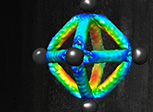
Q&A with CFN User Don DiMarzio
Tuesday, December 6, 2016
In search of next-generation aerospace materials, DiMarzio of Northrop Grumman uses the characterization labs at Brookhaven’s Center for Functional Nanomaterials (CFN) to investigate nanostructures whose self-assembly is directed through DNA scaffolds.
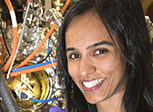
NSLS-II User Profiles: Sana Rani & Alicia Broderick
Tuesday, November 22, 2016
University of Delaware students explore zinc oxide compounds at the Coherent Soft X-ray 2 beamline
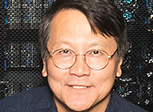
Brookhaven Lab Advances its Computational Science and Data Analysis Capabilities
Friday, November 18, 2016
New capabilities will enable scientists to more efficiently and effectively solve scientific problems
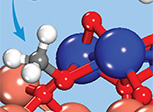
New Catalyst for Making Methanol from Methane
Tuesday, November 15, 2016
Brookhaven scientists have developed a catalyst for converting methane, the main component of abundant natural gas, directly to methanol at fairly low temperatures. Refining this catalyst could lead to a major commercial breakthrough.
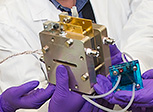
Brookhaven Lab Wins Three 2016 R&D 100 Awards
Tuesday, November 8, 2016
Innovations in microscopy, catalysis, and nanomaterials are among the 100 technologies and services of the past year selected by R&D Magazine to receive awards.
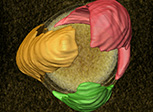
New Technique Reveals Powerful, "Patchy" Approach to Nanoparticle Synthesis
Friday, October 28, 2016
Scientists use 3D visualization to map striking and transformative nanoscale surface structures
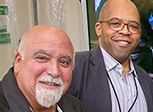
Bringing Nanoscience into the K–12 Classroom
Wednesday, October 12, 2016
A collaboration between Brookhaven Lab and a local school district leads to an award-winning nanotechnology program.
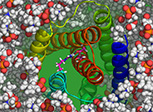
Brookhaven Lab to Play Major Role in Two DOE Exascale Computing Application Projects
Wednesday, October 5, 2016
Scientists will help develop modeling and simulation applications for next-generation supercomputers to enable advances in nuclear and high-energy physics and chemistry research.
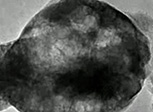
Water Vapor Sets Some Oxides Aflutter
Monday, October 3, 2016
A team of scientists has discovered a phenomenon that could have practical applications in solar cells, rechargeable battery electrodes, and water-splitting devices.
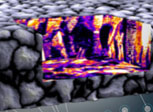
Crystalline Fault Lines Provide Pathway for Solar Cell Current
Monday, September 26, 2016
Scientists studying cadmium telluride solar cells find that microstructural defects, generally thought to be detrimental, actually improve conductivity by creating pathways that ease the flow of charge carriers.
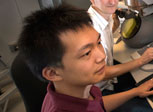
Collaboration Strikes Gold Pioneering a New Method for Catalyst Production
Wednesday, September 7, 2016
Scientists demonstrate a new method for producing catalytically active gold nanoparticles using a jet stream of liquid helium to blow gold vapor through a barren, cold landscape.
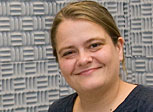
When Nanofabrication Leads to Nanoscience: Optics Developed at the CFN Bring NSLS-II's Ultra-Bright x-rays into Focus for Scientific Imaging
Tuesday, August 30, 2016
Advanced x-ray nanofocusing optics are critical components in a one-of-a-kind x-ray scanning microscope.

Five Brookhaven Lab Projects Selected as R&D 100 Award Finalists
Monday, August 29, 2016
Five projects from Brookhaven National Laboratory have been selected as finalists for the 2016 R&D 100 awards, which honor the top 100 proven technological advances of the past year as determined by a panel selected by R&D Magazine.
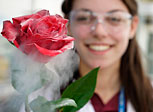
Summer Sundays are a Huge Success, Again!
Friday, August 19, 2016
This year, Brookhaven Lab welcomed nearly 5,000 visitors to Summer Sundays tours to learn about our cutting-edge technologies, attend science shows, and visit our world-class facilities
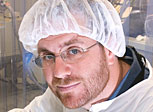
Smarter Self-assembly Opens New Pathways for Nanotechnology
Monday, August 8, 2016
Scientists at Brookhaven Lab have developed a way to direct the self-assembly of multiple molecular patterns within a single material, producing new nanoscale architectures. This is a significant conceptual leap in self-assembly that could change the way we design and manufacture electronics.

Brookhaven Scientists Contribute to Effort to Make Next-generation Electric Vehicle Batteries
Friday, July 29, 2016
Brookhaven chemists contribute to PNNL-led effort to make next-generation electric vehicle batteries.
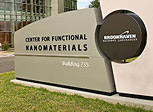
Summer Sundays: Explore the Ultra Small on July 17
Friday, July 15, 2016
Tour the Center for Functional Nanomaterials at Brookhaven Lab this Sunday, July 17. See where scientists study structures as tiny as a billionth of a meter, hear a talk by scientist and facility director Charles Black, enjoy the "Magic of Chemistry" show, and more. Visitors 16 and older must bring a photo ID.
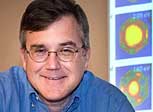
Setting the Gold Standard
Tuesday, July 12, 2016
A team of researchers is the first to have successfully used light to make gold crystal nanoparticles. Their strategy could be used to improve the efficacy of pharmaceutical drug delivery systems and the efficiency of solar panels.
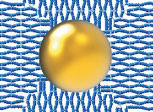
DNA Shaping Up to be Ideal Framework for Rationally Designed Nanostructures
Monday, June 13, 2016
Self-assembly approaches that use DNA to link nanoparticles into different structures could enable the design of nanomaterials with desired functionality.

NSLS-II User Profiles: Wilson Chiu
Tuesday, June 7, 2016
Q and A with Wilson K. S. Chiu, a professor in the Mechanical Engineering Department at the University of Connecticut, who recently conducted an experiment as one of the first general users at the National Synchrotron Light Source II Hard X-Ray Nanoprobe.

CFN User Spotlight: Frances Ross Studies Nanowire Growth
Wednesday, May 18, 2016
IBM materials scientist Frances Ross uses electron microscopy at Brookhaven Lab's Center for Functional Nanomaterials to study the mechanism by which atoms spontaneously self-assemble into nanowires.

Nusnin Akter: A Role Model for Young Women and Underrepresented Minority Engineers
Thursday, May 12, 2016
A Stony Brook University doctoral student and Brookhaven Lab guest researcher brings her passion and curiosity for scientific research to the lab and the community.
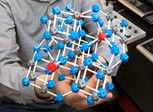
Visualizing the Lithiation of a Nanosized Iron-Oxide Material in Real Time
Monday, May 9, 2016
An electron microscopy technique for visualizing how lithium ions migrate at the nanoscale could help improve the performance of lithium-ion batteries.

Brookhaven's Oleg Gang Named a Battelle 'Inventor of the Year'
Monday, April 25, 2016
Oleg Gang, a physicist developing a novel strategy using DNA to guide the self-assembly of nanoparticles into clusters and arrays with controllable properties, is being honored by Battelle as an "Inventor of the Year."
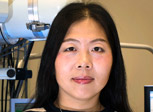
10 Questions with Lihua Zhang
Thursday, April 21, 2016
Materials scientist Lihua Zhang oversees two transmission electron microscopes (TEMs) at the CFN: the JEOL JEM-2100F, a workhorse instrument for high-resolution analytical structural characterization, and the Hitachi HD2700C, a dedicated scanning TEM for resolving chemical and electronic information from nanomaterials.
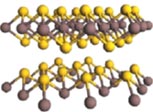
Quantum Dots Enhance Light-to-Current Conversion in Layered Metal Dichalcogenide Semiconductors
Friday, April 8, 2016
Research demonstrates promise of a new approach for improving solar cells, photocatalysts, light sensors, and other optoelectronic devices.

Charles Black Named Director of Brookhaven Lab's Center for Functional Nanomaterials
Friday, April 1, 2016
Charles (Chuck) Black, group leader for Electronic Nanomaterials at the Center for Functional Nanomaterials (CFN), a U.S. Department of Energy Office of Science User Facility located at Brookhaven National Laboratory, has been named CFN Director, effective March 25, 2016.

513th Brookhaven Lecture on Wednesday, 3/30: 'Manipulating Nanostructures With Light'
Thursday, March 24, 2016
Like all of us, atoms and molecules sometimes need a bit of encouragement to reach their full potential. With guidance and innovative positive reinforcement techniques, scientists at the Center for Functional Nanomaterials are encouraging individual molecules to achieve together what they could not achieve on their own.
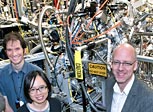
Brookhaven Lab Facilities Team Up to Offer Beamline for Cutting-Edge Science
Tuesday, March 15, 2016
The Coherent Soft X-ray Scattering and Spectroscopy (CSX-2) beamline at the National Synchrotron Light Source II, which hosted its first users in February, was built in partnership with the Center for Functional Nanomaterials.

Brookhaven National Lab, SUNY Old Westbury Host More than 160 Local Students for 'My Brother's Keeper' Anniversary Event
Thursday, March 3, 2016
To celebrate the second anniversary of President Barack Obama's "My Brother's Keeper" initiative, the Brookhaven Lab collaborated with SUNY Old Westbury to bring more than 160 students from New York City and Long Island to the Laboratory on Wednesday, March 2, 2016 for a day of mentorship and engagement in science.
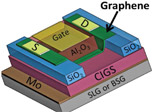
Graphene Leans on Glass to Advance Electronics
Friday, February 12, 2016
Scientists' use of common glass to optimize graphene's electronic properties could improve technologies from flat screens to solar cells.
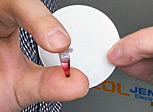
Scientists Guide Gold Nanoparticles to Form "Diamond" Superlattices
Thursday, February 4, 2016
DNA scaffolds cage and coax nanoparticles into position to form crystalline arrangements that mimic the atomic structure of diamond.
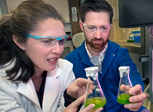
Meet Crysten and Ian Blaby
Friday, January 29, 2016
Brookhaven National Laboratory welcomes two new biologists, Crysten and Ian Blaby, who have been brought to the Lab to explore the many genes that play a role in a plant’s ability to harness energy and what those genes could mean for enhancing bioenergy crops.
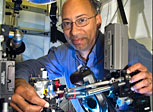
NSLS Research Leads to New Discoveries About Structure of Human Hair
Wednesday, January 27, 2016
A recent study on the detailed micro-structure of human hair reveals new details about the structure of a single strand of human hair, including new models of the molecular arrangements in two different regions of a hair.
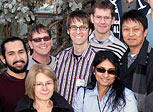
National Lab Facility Staff and DOE Computer Scientists Collaborate on Projects to Speed Up Experimental Data Analysis
Thursday, January 21, 2016
Brookhaven National Laboratory hosted the first in a series of week-long “hackathons,” a code brainstorming session attended by nearly 40 computer scientists and software developers from several DOE Office of Science User Facilities.

Brookhaven Lab Expands Computational Science Initiative
Tuesday, January 12, 2016
Building on its capabilities in data-intensive science, the U.S. Department of Energy's (DOE) Brookhaven National Laboratory has expanded its Computational Science Initiative (CSI). The programs within this initiative leverage computational science, computer science, and mathematics expertise and investments across multiple research areas at the Laboratory.
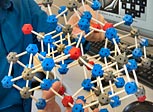
Unique Two-Level Cathode Structure Improves Battery Performance
Monday, January 11, 2016
Controlling surface chemistry of a cathode material could lead to higher-capacity, faster-charging batteries for electronics, vehicles, and energy-storage applications.
2015

2015's Top 10 Scientific Advances at Brookhaven National Laboratory
Tuesday, December 29, 2015
From creating the tiniest drops of primordial particle soup to devising new ways to improve batteries, catalysts, superconductors, and more, scientists at the U.S. Department of Energy's Brookhaven National Laboratory pushed the boundaries of discovery in 2015.

Shining A Light On Water-Splitting Reactions
Thursday, December 17, 2015
Eric Isaacs, a Department of Energy Computational Science Graduate Fellowship (DOE CSGF) recipient, probes how metal nanoparticles supercharge sunlight's water-splitting feat.
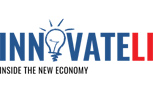
Brookhaven Lab Researchers and Technologies Honored with 'Innovate Long Island' Awards
Wednesday, October 28, 2015
Four scientists at the Department of Energy’s Brookhaven National Laboratory have received an Innovate LI Innovator of the Year award, which recognize Long Island’s best and brightest ideas.

507th Brookhaven Lecture on Tuesday, 9/29: 'Tracking Ion Migrations at the Nanoscale in Rechargeable Batteries'
Thursday, September 24, 2015
During the 507th Brookhaven Lecture, Dong Su will discuss how he and his colleagues at the Center for Functional Nanomaterials are working to determine how different atomic structures can improve performance for rechargeable batteries.

So Long, Summer Students
Friday, August 14, 2015
More than 200 college-age science students marked the end of 10 weeks living and learning among the researchers at the U.S. Department of Energy’s (DOE) Brookhaven National Laboratory.
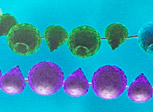
New Computer Model Could Explain how Simple Molecules Took First Step Toward Life
Tuesday, July 28, 2015
Two Brookhaven researchers developed theoretical model to explain the origins of self-replicating molecules.
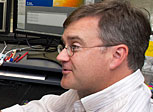
New Technique to Synthesize Nanostructured Nanowires
Monday, July 20, 2015
Researchers developed a new method for growing 'hybrid' crystals at the nanoscale, in which quantum dots of different materials can be incorporated into a host nanowire.
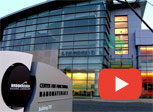
Blazing Trails at Brookhaven Lab's Center for Functional Nanomaterials (Video)
Tuesday, July 14, 2015
Take a video tour of the CFN's cutting-edge, collaborative research into energy solutions, nanomaterial self-assembly, and operando experimentation.

Exploring the Ultra Small
Friday, July 10, 2015
On Sunday, July 12, visit the Center for Functional Nanomaterials, where Brookhaven researchers probe structures as tiny as a billionth of a meter. Learn about scientists’ latest discoveries in innovative energy technologies. Be amazed by "Atoms, Molecules, Matter and More!"
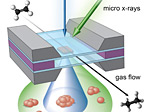
X-Rays and Electrons Join Forces To Map Catalytic Reactions in Real-Time
Monday, June 29, 2015
New technique combines electron microscopy and synchrotron x-rays at Brookhaven Lab to track chemical reactions under real operating conditions.
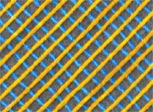
Sweeping Lasers Snap Together Nanoscale Geometric Grids
Tuesday, June 23, 2015
New technique developed by Brookhaven Lab scientists rapidly creates multi-layered, self-assembled grids with fully customizable shapes and compositions.
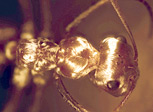
Staying Cool: Saharan Silver Ants
Thursday, June 18, 2015
Researchers show that Saharan silver ants can control electromagnetic waves over an extremely broad range of the electromagnetic spectrum—findings may lead to biologically inspired coatings for passive radiative cooling of objects.
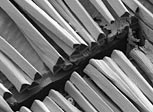
Adapting Nanoscience Imaging Tools to Study Ants' Heat-Deflecting Adaptations
Thursday, June 18, 2015
Nanoscale structure of Saharan ant hairs helps the insects stay cool by reflecting both visible and near-infrared wavelengths and dissipating heat.
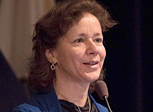
National Synchrotron Light Source II and Center for Functional Nanomaterials Users' Meeting Recap
Tuesday, June 2, 2015
The annual NSLS-II & CFN Users' Meeting included updates from the Department of Energy and Brookhaven Lab leaders and scientists.
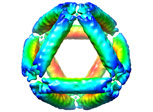
DNA Double Helix Does Double Duty in Assembling Arrays of Nanoparticles
Monday, May 25, 2015
Synthetic pieces of biological molecule form framework and glue for making nanoparticle clusters and arrays.
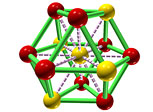
Engineering Phase Changes in Nanoparticle Arrays
Monday, May 25, 2015
Scientists alter attractive and repulsive forces between DNA-linked particles to make dynamic, phase-shifting forms of nanomaterials.
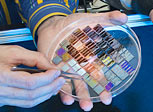
Intense Lasers Cook Up Complex, Self-Assembled Nanomaterials
Wednesday, May 13, 2015
New technique developed at Brookhaven Lab makes self-assembly 1,000 times faster and could be used for industrial-scale solar panels and electronics.
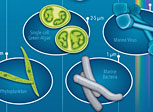
Into the Depths of the Electromagnetic Spectrum
Tuesday, May 5, 2015
Imagining the scale of the waves on the electromagnetic spectrum can be tough — sea creatures on this new infographic lend a hand (or a fin, flipper, tentacle) to help illuminate the power of light.
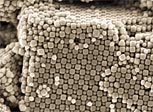
Scientists Use Nanoscale Building Blocks and DNA 'Glue' to Shape 3D Superlattices
Thursday, April 23, 2015
Scientists at Brookhaven Lab have constructed 3D "superlattice" multicomponent nanoparticle arrays where the arrangement of particles is driven by the shape of the tiny building blocks.
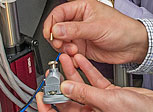
Copper Atoms Bring a Potential New Battery Material to Life
Thursday, March 26, 2015
Scientists track electrochemical reactions in cutting-edge battery materials in real time using “in-operando” synchrotron techniques, revealing important clues for the future design and development of more powerful, longer-lasting lithium-ion batteries.

Scientist Eric Stach Named Special Assistant for New Operando Initiative at Brookhaven Lab
Friday, March 20, 2015
Stach will lead ongoing research that focuses on real-time, real-world energy experiments at the Center for Functional Nanomaterials and National Synchrotron Light Source II.
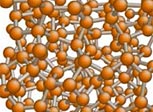
Brookhaven Presents Big Data Pilot Projects at Supercomputing Conference
Wednesday, March 18, 2015
Simon Billinge illustrates how advances in computing and applied mathematics can improve the predictive value of models used to design new materials.
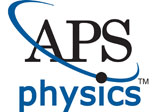
Four Scientists With Major Contributions to Research at Brookhaven Lab Named American Physical Society Fellows
Friday, March 13, 2015
Four scientists who have made significant contributions to ongoing research at the U.S. Department of Energy's Brookhaven National Laboratory were among those recently named Fellows of the American Physical Society, the world's second-largest organization of physicists.
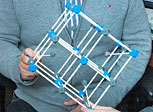
Electrochemical 'Fingers' Unlock Battery's Inner Potential
Friday, February 27, 2015
Scientists at the U.S. Department of Energy’s Brookhaven National Laboratory and collaborating institutes have tracked real-time reaction pathways in 3D to uncover new nanoscale clues to increasing lithium-ion battery capacity and optimizing performance.
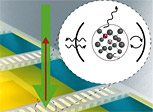
Nanoscale Mirrored Cavities Amplify, Connect Quantum Memories
Wednesday, January 28, 2015
Constructing tiny "mirrors" to trap light increases the efficiency with which photons can pick up and transmit information about electronic spin states, essential for scaling up quantum memories for functional quantum computing systems and networks.
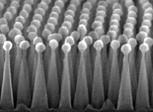
Self-Assembled Nanotextures Create Antireflective Surface on Silicon Solar Cells
Wednesday, January 21, 2015
Scientists show that etching a nanoscale texture onto silicon creates an antireflective surface that works as well as state-of-the-art thin-film multilayer coatings.

Solar Cell Polymers with Multiplied Electrical Output
Monday, January 12, 2015
New family of materials produces "twin" electrical charges on single molecules, potentially paving the way for easy manufacture of more efficient solar devices.

2014's Top-10 Scientific Achievements at Brookhaven Lab
Monday, January 5, 2015
From new insights into the building blocks of matter to advances in understanding batteries, superconductors, and a protein that could help fight cancer, 2014 was a year of stunning successes for the U.S. Department of Energy's Brookhaven National Laboratory.
2014
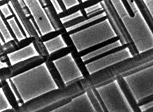
Microscopy Reveals How Atom-High Steps Impede Oxidation of Metal Surfaces
Monday, December 29, 2014
A new study reveals that certain features of metal surfaces can stop the process of oxidation in its tracks.
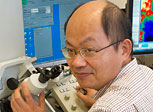
Toyota to Use Brookhaven Lab's Center for Functional Nanomaterials to Advance Vehicle Battery Tech
Thursday, October 30, 2014
Scientists will collaborate with Brookhaven Lab experts and use world-leading electron microscopes to explore the real-time electrochemical reactions in promising new batteries.
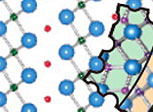
Tracking Heat-Driven Decay in Leading Electric Vehicle Batteries
Monday, October 27, 2014
Scientists reveal the atomic-scale structural and electronic degradations that plague rechargeable lithium-ion batteries and make them vulnerable during high-temperature operations.
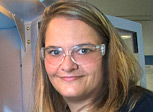
Women @ Energy: Nathalie Bouet
Friday, October 24, 2014
Meet Nathalie Bouet, one of several scientists from Brookhaven Lab featured in the U.S. Department of Energy's 2014 Women @ Energy series. Find out what's exciting about her research, her advice for aspiring scientists, and more.

Researchers Pump Up Oil Accumulation in Plant Leaves
Tuesday, October 7, 2014
A series of detailed genetic studies points scientists to a new way to dramatically increase the accumulation of oil in plant leaves, an abundant source of biomass for fuel production.

CFN User Spotlight: Dirk Englund Tracks Photons to Develop Unprecedented Quantum Technology
Wednesday, September 3, 2014
Quantum photonics research could change the way we communicate, compute, and measure phenomena on the smallest scales possible.
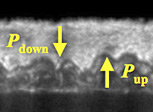
Promising Ferroelectric Materials Suffer From Unexpected Electric Polarizations
Monday, August 18, 2014
Brookhaven Lab scientists found surprising head-to-head charge polarizations that impede performance in next-generation ferroelectric materials that could otherwise revolutionize data-driven devices.

Nanotechnology PubSci Explores the Huge Impacts of the Ultra Small
Thursday, June 12, 2014
Scientists from Brookhaven Lab’s Center for Functional Nanomaterials bring the thrill and impact of billionths-of-a-meter science to a local bar.

DNA-Linked Nanoparticles Form Switchable 'Thin Films' on a Liquid Surface
Wednesday, June 11, 2014
Scientists seeking ways to engineer the assembly of particles measuring billionths of a meter have achieved a new first—the formation of a single layer of nanoparticles on a liquid surface where the properties of the layer can be easily switched.

Complex Calculations at CFN: Meet Mark Hybertsen
Monday, June 2, 2014
Mark Hybertsen, a scientist in the Lab’s Center for Functional Nanomaterials, together with members of his group is researching new strategies that will help meet the unprecedented challenges the world faces for energy solutions.

Scientists Pinpoint the Creeping Nanocrystals Behind Lithium-Ion Battery Degradation
Thursday, May 29, 2014
Two breakthrough studies led by national labs reveal the nanoscale structural changes that degrade battery performance during cycles of charge and discharge.

MIT/National Labs Team Visualizes Complex Electronic State
Wednesday, May 21, 2014
A multidisciplinary group solves the mystery of how a potential battery electrode material behaves.

Brookhaven's Charles T. Black Named a Battelle 'Inventor of the Year'
Monday, May 5, 2014
Black is being recognized for his work harnessing nanoscale self assembly to engineer materials for energy applications at Brookhaven's Center for Functional Nanomaterials.

Harnessing Magnetic Vortices for Making Nanoscale Antennas
Wednesday, April 30, 2014
Scientists at the U.S. Department of Energy's Brookhaven National Laboratory are seeking ways to synchronize the magnetic spins in nanoscale devices to build tiny yet more powerful signal-generating or receiving antennas and other electronic applications.

Doing Business with User Facilities
Tuesday, April 29, 2014
At the 2014 annual users’ meeting for the National Synchrotron Light Source (NSLS), NSLS-II, and the Center for Functional Nanomaterials, May 19-21, expect to see vendors everywhere you turn.

Label-free, Sequence-specific, Inexpensive Fluorescent DNA Sensors
Monday, April 28, 2014
Scientists have developed a new highly sensitive way to detect specific sequences of DNA with widespread potential for applications in forensics, medical diagnostics, and the detection of bioterror agents.

Brookhaven Lab Offers Workshop for Business Partners
Thursday, April 24, 2014
On Wednesday, May 7, the Lab will hold its first Small Business/Technology Commercialization & Partnerships business event, an opportunity for attendees to interact with Brookhaven staff working in its partnership areas and to tour some of the Lab’s world-class facilities.

10 Questions with Gayani Perera
Monday, April 21, 2014
At its most extreme, nanoscience involves synthesizing and characterizing materials at the atomic-scale, exploring fundamental properties and engineering entirely new technologies.

Suffolk County Women Studying STEM Visit Brookhaven Lab
Monday, April 21, 2014
Suffolk County Community College students toured the Center for Functional Nanomaterials to learn about careers in science, technology, engineering, and math.

Kevin Yager on the Nanoscience of Studying Scattered X-rays
Monday, April 14, 2014
Kevin Yager, a scientist at Brookhaven Lab's Center for Functional Nanomaterials, discusses his research on materials spanning just billionths of a meter. Yager specializes in making new materials through meticulously guided self-assembly and probing nanoscale structures with a technique called x-ray scattering.

Top-10 Brookhaven Lab Breakthroughs of 2013
Wednesday, January 15, 2014
2013 was a banner year for science at the U.S. Department of Energy's Brookhaven National Laboratory—from our contributions to Nobel Prize-winning research to new insights into catalysts, superconductors, and other materials key to advancing energy-efficient technologies.

Disordered Materials Hold Promise for Better Batteries
Friday, January 10, 2014
MIT and BNL researchers find that contrary to conventional wisdom, cathodes made of disordered lithium compounds can perform better than perfectly ordered ones.

The Play-by-Play of Energy Conversion: Catching Catalysts in Action
Monday, January 6, 2014
New experimental techniques reveal crucial reaction in real time with nanoscale detail.
2013

Small Size Enhances Charge Transfer in Quantum Dots
Monday, December 16, 2013
Single-particle study identifies possible path to improved conversion of sunlight to electricity in photovoltaic devices.

iCFN User Spotlight—Latha Venkataraman: Advancing the World's Smallest Devices
Wednesday, December 11, 2013
Latha Venkataraman, physicist and Associate Professor at Columbia University, specializes in sensitive nanoscale systems that could one day form the foundation for technological breakthroughs.

10 Questions with Kevin Yager
Wednesday, December 11, 2013
The next-generation of catalysts, solar cells, and microchips will be built and manipulated with precision stretching from the macroscopic to the atomic.

Small Particles, Big Findings
Friday, November 15, 2013
Scientists from Brookhaven Lab and Yeshiva University collaborate to develop new ways to study how nanoparticles behave in catalysts, the “kick-starters” of chemical reactions that convert fuels to useable forms of energy and transform raw materials to industrial products.

Showcasing Brookhaven Science to Industry
Thursday, November 14, 2013
Brookhaven Lab hosts a daylong meeting to introduce industry to user facilities and applied programs.

Using Data Science Tools to Discover New Nanostructured Materials
Monday, October 28, 2013
Researchers have developed a new approach to designing novel nanostructured materials through an inverse design framework using genetic algorithms.

Nano-Cone Textures Generate Extremely "Robust" Water-Repellent Surfaces
Monday, October 21, 2013
Scientists create surfaces with differently shaped nanoscale textures that may yield improved materials for applications in transportation, energy, and diagnostics.

Mixing Nanoparticles to Make Multifunctional Materials
Sunday, October 20, 2013
Standardized technique for combining different types of nanoparticles to produce large-scale composite materials opens remarkable opportunities for 'mix and match' materials fabrication.

Nanocrystal Catalyst Transforms Impure Hydrogen into Electricity
Wednesday, September 18, 2013
Brookhaven Lab scientists use simple, 'green' process to create novel core-shell catalyst that tolerates carbon monoxide in fuel cells and opens new, inexpensive pathways for zero-emission vehicles.

Shedding New Light on the 'Electron Highways' of Organic Solar Cells
Friday, August 30, 2013
Researchers at Brookhaven Lab and Stony Brook University have developed a way to map out the degree of "traffic congestion" on the electron highways within the photoactive layer of organic solar cells.

Stunning Science: The Unexpected Eye Candy of Experimentation
Tuesday, August 13, 2013
From atomic-scale patterns to animations of primordial plasma, Brookhaven Lab scientists use striking imagery to push research forward.

Researchers Help Show New Way to Study and Improve Catalytic Reactions
Thursday, July 18, 2013
University of Pennsylvania leads collaboration to test catalyst structures and enhance nanotechnology performance and fabrication.

Tiny Nanocubes Help Scientists Tell Left from Right
Wednesday, June 26, 2013
A team of scientists at the U.S. Department of Energy's Brookhaven National Laboratory and Ohio University has developed a new, simpler way to discern molecular handedness, known as chirality, which could improve drug development, optical sensors and more.

Users' Meeting Workshops Touch on Past, Present & Future
Tuesday, June 25, 2013
The six daylong workshops conducted in the two days bracketing the 2013 NSLS/CFN Joint Users’ Meeting plenary session represented the full spectrum of synchrotron history at Brookhaven Lab.

Exposure to Air Transforms Gold Alloys Into Catalytic Nanostructures
Tuesday, June 11, 2013
Brookhaven Lab scientists create catalytic core-shell nanoparticles made of gold-indium oxide through simple process of room-temperature oxidation.

Open Up, Break it Down, Get it Out There!
Thursday, May 30, 2013
The 2013 NSLS/CFN Joint Users' Meeting fully embraced this year's theme: "Telling our story, sharing our science."

Atomic-Scale Investigations Solve Key Puzzle of LED Efficiency
Wednesday, May 22, 2013
MIT and Brookhaven Lab scientists use electron microscopy imaging techniques to settle a solid-state controversy and raise new experimental possibilities.

DNA-Guided Assembly Yields Novel Ribbon-Like Nanostructures
Thursday, May 16, 2013
DNA "linker" strands coax nano-sized rods to line up in way unlike any other spontaneous arrangement of rod-shaped objects. The arrangement—with the rods forming "rungs" on ladder-like ribbons could result in the fabrication of new nanostructured materials with desired properties.

10 Questions with Eli Sutter
Wednesday, April 24, 2013
Understanding the intricacies—both internal and external—of nanoscale materials and processes can drive innovations that push the technology found inside everything from electric vehicles to smart phones.

Recipe for Low-Cost, Biomass-Derived Catalyst for Hydrogen Production
Wednesday, April 24, 2013
Researchers at Brookhaven Lab describe details of a low-cost, stable, effective catalyst made from renewable soybeans and abundant molybdenum metal that could replace costly platinum in the production of hydrogen.

From Laboratory to Industry: Unlocking the Potential of Graphene
Thursday, April 18, 2013
Graphene, the much-vaunted "super material" that catapulted onto the materials science scene just nine years ago, offers extraordinary opportunities for industries interested in everything from supercomputers to renewable energy.

Meet Kim Kisslinger, Master of the Nanospecimen
Tuesday, April 2, 2013
At Brookhaven's Center for Functional Nanomaterials, technician Kim Kisslinger uses a variety of polishing techniques, including diamond-encrusted "sandpaper" and focused ion-beam milling, to prepare picture-perfect nanosamples for imaging under transmission electron microscopes.

Brookhaven Lab Physicist Receives Charles Hirsch Award from the Institute of Electrical and Electronics Engineers
Friday, February 22, 2013
Novel design of accelerator components enables exploration of fundamental physics, materials science, and more.

10 Questions With Aaron Stein
Monday, January 14, 2013
Aaron Stein specializes in electron beam lithography (EBL), a technique that uses advanced machinery to draw nanoscale patterns into a wide range of materials.
2012

SBU-Led Research Reveals Nanotechnology Simplifies Hydrogen Production for Clean Energy
Monday, November 26, 2012
Researcher says project is first ever demonstration of the potential of using metal nanoparticles to make fuel from water.

Brookhaven Lab’s Chongai Kuang Wins Award for Research on Atmospheric Particles
Friday, November 9, 2012
BNL’s Chongai Kuang has won the American Association of Aerosol Research’s 2012 Sheldon K. Friedlander Award.

Percy Zahl: Mapping Materials at the Nanoscale
Tuesday, October 23, 2012
In 1804, Lewis and Clark set out to explore more than two million square kilometers of land west of the Mississippi River. Now in 2012, Percy Zahl of Brookhaven Lab's Center for Functional Nanomaterials (CFN) is exploring the surface of materials measured in billionths of a meter — with atomic-scale, pinpointed accuracy.

Girl Scouts Learn How Scientists See the Invisible
Thursday, October 18, 2012
In celebration of the 100th anniversary of the Girl Scouts of America and the importance of science education, Girl Scouts from the Mastic-Shirley area visited Brookhaven National Lab to learn how scientists “see the invisible.”

Electronics Play By a New Set of Rules at the Molecular Scale
Sunday, September 2, 2012
Scientists at Brookhaven National Laboratory and Columbia University uncovered fundamental information about the effect of quantum mechanics on organic electronics.

BNL’s Researchers Help Connect Nuclear Science and Nanoscience for Safer Reactors
Friday, August 31, 2012
Simerjeet Gill has been using the NSLS and the CFN to study radiation damage-tolerant nanocomposites, which may hold the key to solving problems of cracking, swelling and embrittlement in nuclear materials.

Unraveling Intricate Interactions, One Molecule at a Time
Sunday, August 12, 2012
In key step towards design of better organic electronic devices, Columbia Engineering team makes first single-molecule measurement of van der Waals interactions at a metal-organic interface.

Physicist James Dickerson Joins CFN
Thursday, August 9, 2012
As the new Assistant Director of the Center for Functional Nanomaterials, James Dickerson will help Brookhaven National Laboratory form strategic partnerships.

Congressional Committee Praises Brookhaven Lab Science Facilities
Thursday, August 2, 2012
DOE user facilities noted for scientific breakthroughs that drive innovation and promote economic growth.

Taking Hybrids for a Spin to Generate Electricity from Sunlight
Thursday, June 14, 2012
Scientists demonstrate precision control of self assembly and charge transfer in a hybrid material composed of light-absorbing quantum dots and a conjugated polymer — two types of semiconducting materials that have been widely studied for photovoltaic and other optoelectronic applications and biosensors.

Notes from the 2012 NSLS & CFN Joint Users Meeting
Monday, June 4, 2012
This year’s NSLS/CFN Joint Users’ Meeting, attended by more than 400, was generally upbeat, as always.

2012 NSLS & CFN Joint Users’ Meeting Starts Today, 5/21
Monday, May 21, 2012
All are invited to the plenary sessions for the 2012 NSLS & CFN Joint Users’ Meeting that starts today, May 21. Speakers this morning include Doon Gibbs of BNL, Harriet Kung from the U.S. Department of Energy Office of Science, and Gina Kolata of the New York Times.

New Technique Uses Electrons to Map Nanoparticle Atomic Structures
Friday, May 4, 2012
A Brookhaven/Columbia Engineering School team of scientists shwos how a form of nanocrystallography can be carried out using a transmission electron microscope ‹ an instrument found in many chemistry and materials science laboratories.

Welcome to the 2012 Joint NSLS/CFN Users Meeting, May 21-23
Monday, April 30, 2012
‘Expanding the Toolbox for 21st Century Science’ is the theme of the 2012 Joint National Synchrotron Light Source (NSLS) and Center for Functional Nanomaterials (CFN) Users’ Meeting, to be held May 21-23. Register by May 4.

New Supercomputers at Brookhaven will Advance Nanomaterial Design
Thursday, March 22, 2012
The new Blue Gene/Q will help efficiently map out atomic-scale chemical reactions and guide new energy catalyst technologies.

Catalysis Chemist Accelerates Alternative Energy Research
Sunday, March 18, 2012
Goldhaber Fellow Jonathan Hull is part of a team designing catalysts that could be vital to the development of renewable fuels.

Self-Assembly by Instruction: Designing Nanoscale Systems Using DNA-Based Approaches
Wednesday, January 18, 2012
Join Physicist Oleg Gang of the Center for Functional Nanomaterials as he gives the 474th Brookhaven Lecture tomorrow, Wednesday, January 18.
2011

Brookhaven Researchers Demonstrate Source of Blinking in Quantum Dots
Thursday, November 10, 2011
Imagine a tiny light bulb, a handful of nanometers (billionths of a meter) in diameter. It stays on for a time, then blinks unexpectedly out and comes back to life a moment later. On. Off. On. Off. On. Off.

Nanoconfinement of Organic Solar Cell Material Enhances Conductivity
Monday, October 24, 2011
Nanometer-scale restructuring of a polymer used in organic solar cells could lead to improved devices.

New Anode Could Improve Lithium-Ion Battery Performance
Thursday, September 29, 2011
With gasoline prices still hovering near $4 per gallon, scientists at Brookhaven Lab’s Center for Functional Nanomaterials (CFN) are helping to develop electric vehicles capable of driving hundreds of miles on a single charge.

Scientists Detect Unusual ‘Quasiparticles’ in Tri-Layer Graphene
Sunday, September 25, 2011
Findings reveal new possibilities for manipulating charge and spin in electronic devices.

Nanoimprinting Controls Orientation of Organic Solar Polymers
Monday, September 12, 2011
Restructuring organic polymers could lead to more efficient conversion of sunlight to electricity.

Injecting Electrons into a Single Sheet of Carbon Atoms through Chemical Substitution
Tuesday, August 30, 2011
Injecting electrons into a single sheet of carbon atoms through chemical substitution may result in transparent conductors for organic solar cells with increased power conversion efficiency.

Tour the Center for Functional Nanomaterials at Brookhaven Lab on Sunday, July 17
Friday, July 15, 2011
This Sunday, July 17, Brookhaven Lab will be open to all for a tour of the Center for Functional Nanomaterials, where BNL researchers probe structures as tiny as a billionth of a meter.

Columbia Engineers Control Light Propagation in Photonic Chips
Monday, July 11, 2011
Researchers at Columbia Engineering School have built optical nanostructures that enable them to slow photons down and fully control light dispersion.

Brookhaven Lab Wins Two R&D 100 Awards for Imaging Devices Used in Scientific Research
Wednesday, June 22, 2011
BNL has won two R&D 100 Awards for developing imaging tools that will help researchers study materials ranging from seventeenth-century paintings to photovoltaics.

Self-Cleaning Anodes: Researchers Develop Nanoparticle Technology That Could Facilitate Cost-Effective Coal-Powered Fuel Cells
Wednesday, June 22, 2011
Researchers have developed a self-cleaning technique that could allow solid oxide fuel cells to be powered directly by coal gas at relatively low operating temperatures.

NSLS-CFN Users’ Meeting Draws Record Number of Attendees
Tuesday, June 7, 2011
Nearly 500 visiting scientists, staff members, funding representatives, and exhibitors gathered for the annual NSLS-CFN joint users’ meeting.

INCREASE Signs MOU with Brookhaven Lab, Develops Energy Storage Proposal
Monday, June 6, 2011
More than 50 faculty members from minority-serving institutions came to Brookhaven to finalize an energy storage research proposal based on tools at the CFN and NSLS.

Activated Graphene Makes Superior Supercapacitors for Energy Storage
Thursday, May 12, 2011
New material, characterized at CFN, combines high storage capacity with quick energy release and unlimited recharge.

Pairing Quantum Dots with Fullerenes for Nanoscale Photovoltaics
Tuesday, May 10, 2011
Brookhaven scientists have assembled nanoscale pairing of particles that show promise as miniaturized power sources.

Expanding the Degrees of Surface Freezing
Wednesday, March 30, 2011
Researchers have discovered that the molecules in thin films remain frozen at a temperature where the bulk material is molten. Thin molecular films have a range of applications extending from organic solar cells to biosensors.

Engineering Atomic Interfaces for New Electronics
Thursday, February 24, 2011
A multi-institutional team has made fundamental discoveries at the border regions, called interfaces, between oxide materials.

Brookhaven Lab Wins Inaugural Gordon Battelle Prizes for Scientific Discovery and Technology Impact
Tuesday, February 1, 2011
BNL has won three of 10 prizes given for the first time by Battelle for scientific advances and technology innovations.

Battelle CEO Announces Winners of Inaugural Gordon Battelle Prize
Thursday, January 27, 2011
Battelle, the world's largest non-profit independent research and development organization, today announced 10 winners of the inaugural Gordon Battelle Prizes for scientific discovery and technology impact.

Brookhaven Lab’s Top 5 Scientific Discoveries of 2010
Friday, January 14, 2011
From the creation of 4-trillion-degree matter that existed just microseconds after the Big Bang to new nanocatalysts that can make fuel-cell cars more economical, BNL made a series of stunning discoveries in 2010.
2010

Scientists Put a New Spin on Nanotechnology
Monday, November 29, 2010
An international team of researchers, including scientists from Brookhaven, has succeeded in creating artificial spin ice in a state of thermal equilibrium for the first time, allowing them to examine the precise configuration of this important nanomaterial.

New Highly Stable Fuel-Cell Catalyst Gets Strength from its Nano Core
Wednesday, November 10, 2010
Palladium core protects precious platinum; enhances reactivity/stability of electrocatalyst for automotive applications.

Transparent Conductive Material Could Lead to Power-Generating Windows
Wednesday, November 3, 2010
Scientists at Brookhaven National Laboratory and Los Alamos National Laboratory have fabricated transparent thin films capable of absorbing light and generating electric charge over a relatively large area. The material, described in the journal Chemistry of Materials, could be used to develop transparent solar panels or even windows that absorb solar energy to generate electricity.

New ARRA-funded Equipment Arriving at CFN
Tuesday, October 12, 2010
The CFN is receiving more than $5 million in new equipment from the American Recovery and Reinvestment Act.

Watching the Game Plays of Graphene Conductance
Thursday, October 7, 2010
A Brookhaven team has developed a new technique for studying the quantum Hall effect in graphene.

Multi-Component Nano-Structures with Tunable Optical Properties
Thursday, September 30, 2010
First successful assembly of 3-D multi-component nanoscale structures with tunable optical properties brings researchers one step closer to applications in solar energy, sensors, and tiny circuits

Nanoparticles Increase Intensity of Quantum Dots' Glow
Monday, July 26, 2010
Demonstration of precision DNA-based nanoassembly method for making light-emitting particle clusters could lead to advances in solar cells, optoelectronics, and biosensors

Climate Change, Clean Energy Define NSLS CFN Users’ Meeting
Friday, June 4, 2010
About 500 visiting scientists, staff members, and funding representatives gathered at BNL for the National Synchrotron Light Source and Center for Functional Nanomaterials Users’ Meeting, which emphasized climate change and the tools scientists are using to combat it.

The Smiles Behind the Names
Monday, May 24, 2010
Users are family at Brookhaven Lab. Kathy Nasta and Grace Webster both make sure of that.

Popular Paper: CFN Graphene Research Most Cited in Field
Monday, May 10, 2010
A paper published by BNL scientists Eli Sutter and Peter Sutter has been named the highest-cited study in the field of epitaxial graphene, a “new” form of carbon that’s just a single atom thick.

Shining Light on Graphene-Metal Interactions
Friday, April 2, 2010
BNL researchers uncover intriguing details about graphene, a single-layer form of carbon with superior electrical and optical properties.

Scientists Glimpse Nanobubbles on Super Non-Stick Surfaces
Wednesday, February 24, 2010
The first glimpse of miniscule air bubbles that keep water from wetting a super non-stick surface could lead to new super-slick materials with applications in energy, medicine, and more.

INCREASE Expands to the Center for Functional Nanomaterials
Wednesday, January 27, 2010
Workshop introduces minority faculty to scientific opportunities and collaborations at BNL’s Center for Functional Nanomaterials.
2009

Switchable Nanostructures Made with DNA
Sunday, December 20, 2009
Using synthetic DNA “linkers,” Brookhaven scientists have built switchable, responsive nanostructures that could be useful as biosensors, in solar cells, and as new materials for data storage.

Stanislaus S. Wong Receives Buck-Whitney Award from the American Chemical Society Eastern New York Section
Thursday, November 19, 2009
Stanislaus S. Wong, a scientist with a joint appointment at Brookhaven Lab and Stony Brook University, has won the Buck-Whitney Award from the American Chemical Society (ACS) Eastern New York Section.

Center for Functional Nanomaterials Selects Winners of Image Contest
Monday, November 16, 2009
Percy Zahl and Bill Sherman have taken the top prizes in the 2009 CFN Image Challenge for their pictures of the nanoworld and life at the CFN.

Simultaneous Nanoscale Imaging of Surface and Bulk Atoms
Sunday, September 20, 2009
Brookhaven Lab scientists have developed a new scanning electron microscope capable of selectively imaging single atoms on a surface while simultaneously probing atoms throughout the sample’s depth. The development could greatly expand scientists’ ability to understand and control chemical reactions, such as those in energy-conversion devices.

New Issue of CFN News Available
Wednesday, July 15, 2009
The latest issue of "CFN News" has stories featuring DNA-Based Assembly Line for Precision Nano-Cluster Construction, an overview of the CFN Open House, a focus on safety, and more.

Syracuse University announces new agreement with Brookhaven National Laboratory
Wednesday, July 1, 2009
A new agreement between Syracuse University and Brookhaven National Laboratory will enable Syracuse faculty and students to use Brookhaven’s state-of-the-art research facilities.

Adelphi Professor and Students Get Down to Nano
Monday, June 29, 2009
When Justyna Widera moved to the United States from Poland nine years ago, she hoped to teach chemistry. Four years ago, she landed her dream job as an assistant professor at Adelphi University on Long Island.

NSLS-CFN Users' Meeting Highlights Boost, Opportunities in Science Funding
Wednesday, June 3, 2009
Pointing to long-awaited increases in support for science, government and Laboratory officials painted a bright picture for the future of research in the United States and Brookhaven at the 2009 joint meeting of the National Synchrotron Light Source and Center for Functional Nanomaterials user communities. (L to R, above: Emilio Mendez, Chi-Chang Kao and Steve Dierker.)

Recent Research Highlights Featured by NSLS and CFN
Monday, May 18, 2009
Recent highlights of research at the National Synchrotron Light Source include discoveries of an "on switch" for a cell death signaling mechanism and a new protein function. Research highlights at the Center for Functional Nanomaterials include a BNL-developed DNA-based assembly line for precision nano-cluster construction and the discovery of a potential on-off switch for nanoelectronics.

Talk at Brookhaven Lab on ‘Nanotechnology: Its Promise and Challenges,’ May 14
Monday, April 27, 2009
Vicki Colvin of Rice University will give a talk titled “Nanotechnology: Its Promise and Challenges” at Brookhaven Lab on Thursday, May 14, at 4 p.m. in Berkner Hall. The talk is free and open to the public.

Construction Projects at Brookhaven Lab Win Department of Energy Award
Monday, March 30, 2009
Two large construction projects at the Brookhaven Lab — the U.S. ATLAS Detector Project and the Center for Functional Nanomaterials (CFN) — have been named winners of the DOE Secretary’s Award for Achievement.

DNA-Based Assembly Line for Precision Nano-Cluster Construction
Sunday, March 29, 2009
Building on the idea of using DNA to link up nanoparticles — particles measuring mere billionths of a meter — scientists at Brookhaven Lab have designed a molecular assembly line for predictable, high-precision nano-construction.

Middle School Maglev Contest at Brookhaven Lab, April 1
Wednesday, March 25, 2009
Model Maglev vehicles built by Long Island middle school students will be judged on speed, efficiency, and appearance at the 19th Annual Middle School Magnetic Levitation Contest.

Researchers Discover a Potential On-Off Switch for Nanoelectronics
Wednesday, March 4, 2009
As electronic circuits shrink from finely etched lines in silicon wafers to nearly elusive proportions, researchers at Lawrence Berkeley National Laboratory and Columbia University are studying how electrons flow through a molecular junction-a nanometer scale circuit element that contacts gold atoms with a single molecule.
2008

Two Brookhaven Lab Buildings Achieve LEED Green Building Certification
Thursday, September 4, 2008
Two buildings on the 5,300-acre site of Brookhaven National Laboratory have each been awarded a LEED silver rating by the U.S. Green Building Council. LEED stands for Leadership in Energy and Environmental Design. The two buildings — the 94,500 square-foot Center for Functional Nanomaterials (CFN) and the 65,000 square-foot Research Support Building (RSB) — are the newest on the Brookhaven Lab site.

Controlling the Size of Nanoclusters
Tuesday, August 19, 2008
Melissa Patterson, a W. Burghardt Turner Fellow at Stony Brook University, will give a talk at the American Chemical Society’s national meeting in Philadelphia on controlling the size of nanoclusters, research she performed using a new instrument at Brookhaven Lab.

Controlling the Size of Nanoclusters: First Step in Making New Catalysts
Wednesday, July 9, 2008
Researchers from Brookhaven National Laboratory and Stony Brook University have developed a new instrument that allows them to control the size of nanoclusters — groups of 10 to 100 atoms — with atomic precision. They created a model nanocatalyst of molybdenum sulfide, the first step in developing the next generation of materials to be used in hydrodesulfurization, a process that removes sulfur from natural gas and petroleum products to reduce pollution.

Battelle Honors Weiqiang Han as Brookhaven Lab's 'Inventor of the Year'
Friday, April 25, 2008
Brookhaven scientist Weiqiang Han will be honored as the Laboratory's "Inventor of the Year" on April 25, in Columbus, Ohio, by Battelle, a global science and technology company that develops and commercializes technology. Battelle and Stony Brook University comprise Brookhaven Science Associates, the company that manages Brookhaven Lab.

Brookhaven Lab's Nanoscience Staff Inspires Islip Students' Winning 'Future City' Entries
Friday, April 11, 2008
If you live on Long Island and are in competition to build the best city of the future incorporating nanotechnology, where do you go to find out what, exactly, is technology at the nanoscale? Teacher Julia Johnson, whose 7th and 8th grade students are members of one of the two Islip Middle School teams which entered the 2007-08 Future City™ competition, turned to Brookhaven Lab.

Nanotechnology Research Roundtable in Boston Friday, Feb. 15
Wednesday, February 13, 2008
Reporters will meet with four of America's foremost nanotechnology experts for a wide-ranging discussion about using the technology to more effectively treat patients and to better produce and secure energy.

DNA Technique Yields 3-D Crystalline Organization of Nanoparticles
Wednesday, January 30, 2008
In an achievement some see as the "holy grail" of nanoscience, researchers at Brookhaven have used DNA to guide the creation of three-dimensional, ordered, crystalline structures of nanoparticles. The ability to engineer such 3-D structures is essential to producing functional materials that take advantage of the unique properties that may exist at the nanoscale.

Jim Misewich Named Head of Brookhaven Lab's Basic Energy Sciences
Monday, January 7, 2008
Jim Misewich has been named Associate Laboratory Director for Basic Energy Sciences (BES) at Brookhaven National Laboratory, effective December 14. The BES Directorate is responsible for overseeing research in chemistry, condensed matter physics, materials science and nanoscience.
2007

Experiments Reveal Unexpected Activity of Fuel Cell Catalysts
Thursday, December 13, 2007
Brookhaven researchers have unveiled details about a class of catalysts that could help improve the performance of fuel cells. With the goal of producing "clean" hydrogen for fuel cell reactions in mind, the researchers determined why two next-generation catalysts exhibit very high activity.

Workshop on Nanoscience Opportunities for the High Tech Industry Hosted
Wednesday, December 12, 2007
On November 13, 2007, the Center for Functional Nanomaterials hosted the Workshop on Nanoscience Opportunities for the High Tech Industry. The purpose of the workshop was to showcase the resources available at the CFN to representatives from high-tech companies.

New DNA-Based Technique For Assembly of Nano- and Micro-sized Particles
Wednesday, September 12, 2007
Scientists at Brookhaven National Lab have developed a new method for controlling the self-assembly of nanometer and micrometer-sized particles. The method, based on designed DNA shells that coat a particle's surface, can be used to manipulate the structure - and therefore the properties and potential uses - of numerous materials that may be of interest to industry.

Tiny Tubes and Rods Show Promise as Catalysts, Sunscreen
Monday, September 10, 2007
Brookhaven scientists have developed new ways to make or modify nanorods and nanotubes of titanium oxide, a material used in a variety of industrial and medical applications. The methods and new titanium oxide materials may lead to improved catalysts for hydrogen production, more efficient solar cells, and more protective sunscreens.

Using Life's Building Blocks to Control Nanoparticle Assembly
Wednesday, August 22, 2007
Using DNA, researchers at Brookhaven are studying how to control both the speed of nanoparticle assembly and the structure of resulting nanoclusters. Learning how to control the assembly of nanoparticles could lead to applications from more efficient energy generation to cell-targeted systems for drug delivery.

Brookhaven Lab's José Rodriguez to Receive Technical Achievement Award
Wednesday, August 15, 2007
José Rodriguez, a senior chemist at Brookhaven National Laboratory, will receive an Outstanding Technical Achievement Award from HENAAC, a nonprofit organization that honors the outstanding contributions of Hispanic American professionals in science, engineering, technology and mathematics.

Pairing Nanoparticles with Proteins
Wednesday, June 27, 2007
In groundbreaking research, scientists have demonstrated the ability to strategically attach gold nanoparticles - particles on the order of billionths of a meter - to proteins so as to form sheets of protein-gold arrays. The nanoparticles and methods to create nanoparticle-protein complexes can be used to help decipher protein structures, to identify functional parts of proteins, and to "glue" together new protein complexes.

Lab Celebrates Opening of Center for Functional Nanomaterials
Monday, May 21, 2007
The U.S. Department of Energy's Patricia Dehmer, Associate Director of DOE's Office of Science for Basic Energy Sciences, accompanied by U.S. Congressman Timothy Bishop, led a celebration today at DOE's Brookhaven National Laboratory marking the official opening of the Lab's new Center for Functional Nanomaterials.

Nanocenter Ribbon-Cutting at Brookhaven National Laboratory
Wednesday, May 16, 2007
Dedication of the Center for Functional Nanomaterials, a state-of-the-art facility opening at Brookhaven Lab for the fabrication and study of materials at the nanoscale - on the order of billionths of a meter.

New Nanocenter Opening at Brookhaven National Laboratory
Tuesday, May 1, 2007
Dedication of the Center for Functional Nanomaterials, a state-of-the-art facility about to open at Brookhaven National Laboratory for the fabrication and study of materials at the nanoscale — on the order of billionths of a meter. Reporters will be offered tours of brand-new scientific facilities, a lunchtime nanoscience tutorial, and one-on-one interviews with key scientists.

Researchers Use Smallest Pipette to Reveal Freezing "Dance" of Nanoscale Drops
Sunday, April 15, 2007
Using what is thought to be the world's smallest pipette, two researchers at the U.S. Department of Energy's Brookhaven National Laboratory have shown that tiny droplets of liquid metal freeze much differently than their larger counterparts. This study, focused on droplets just a billionth of a trillionth of a liter in size, is published in the April 15, 2007, online edition of Nature Materials.

Giving Platinum Catalysts a Golden Boost for Fuel Cells
Tuesday, March 27, 2007
Platinum might outweigh gold in the jewelry market, but as part of an ongoing effort to produce efficient and affordable fuel cells, scientists at the U.S. Department of Energy's (DOE) Brookhaven National Laboratory are studying how gold atoms might enhance the value of the pricier metal. Specifically, they're looking for ways to use gold to prevent the destruction of platinum in the chemical reactions that take place in fuel cells.

Battelle and Brookhaven Lab Sponsor FIRST LEGO League Tournament
Thursday, January 25, 2007
About 350 middle school students, primarily from Long Island, learned about nanotechnology at the FIRST LEGO League Tournament held at Longwood High School on January 21.

Students and Their Robots Explore the Tiny But Vast World Of Nanotechnology
Tuesday, January 16, 2007
Eight weeks of research and design will culminate on Jan. 21 at the SBPLI - LI FIRST LEGO League Tournament where teams of children and mentors will demonstrate their problem-solving skills, creative thinking, teamwork, competitive play, sportsmanship and sense of community.

Brookhaven Lab Scientists Discover Gold Clusters Stabilize Platinum Electrocatalysts For Use in Fuel Cells
Thursday, January 11, 2007
Platinum is the most efficient electrocatalyst for accelerating chemical reactions in fuel cells for electric vehicles. In reactions during the stop-and-go driving of an electric car, however, the platinum dissolves, which reduces its efficiency as a catalyst. This is a major impediment for vehicle-application of fuel cells. Now, scientists at Brookhaven have overcome this problem.
2006

Emilio Mendez Named Director of Brookhaven Lab's Nanocenter
Wednesday, October 18, 2006
Emilio Mendez, a physics professor at Stony Brook University, has been named Director of the Center for Functional Nanomaterials (CFN) at the U.S. Department of Energy's Brookhaven National Laboratory, effective November 1. Currently under construction, the CFN at Brookhaven is one of five nanocenters supported by the Department of Energy and located at a national laboratory.

Nanoparticle Assembly Enters the Fast Lane
Wednesday, October 11, 2006
The speed of nanoparticle assembly can be accelerated with the assistance of the molecule that carries life's genetic instructions, DNA. Nanoparticles, particles with dimensions on the order of billionths of a meter, could potentially be used for more efficient energy generation and data storage, as well as improved methods for diagnosing and treating disease.

New Methods for Screening Nanoparticles
Monday, August 21, 2006
Scientists at Brookhaven have developed a screening method to examine how newly made nanoparticles (particles with dimensions on the order of billionths of a meter) interact with human cells. This has led to the visualization of how human cells interact with some specific types of carbon nanoparticles.

Liquid Alloy Shows Solid-like Crystal Structure at Surface
Thursday, July 6, 2006
A substance used in nanotechnology contains unusual structures at its surface, a team of researchers led by Oleg Shpyrko, Distinguished Postdoctoral Fellow at the U.S. Department of Energy's Argonne National Laboratory have learned.

Dual Properties of Carbon Nanotubes Revealed
Friday, April 28, 2006
For the first time, researchers have directly measured the electronic structure of individual carbon nanotubes whose physical properties had already been determined. This new study, pioneered by researchers at the U.S. Department of Energy's Brookhaven National Laboratory working with their colleagues at Columbia University, may help scientists determine the usefulness of carbon nanotubes in various applications, from microelectronics to mechanical, thermal, and photovoltaic devices.

Cerium Oxide Nanotubes Get Noticed
Tuesday, March 28, 2006
Chemists and materials scientists often study "nanotubes", capsule-shaped molecules only a few billionths of a meter (nanometers) in width. In nanotube form, many materials take on useful, unique properties, such as physical strength and excellent conductivity. Carbon nanotubes are the most widely investigated variety. Now, in pioneering research, scientists at Brookhaven have created and investigated the properties of nanotubes made of a different, yet equally interesting material: cerium oxide

Modeling the Chemical Reactions of Nanoparticles
Monday, March 27, 2006
As science enters the world of the very small, researchers will be searching for new ways to study nanoparticles and their properties. For the past several years, scientists at the U.S. Department of Energy's Brookhaven National Laboratory have been experimenting with new methods for preparing nanoparticles on metal supports, with the aim of creating model catalyst systems to better study the special reactivity of nano-sized catalyst particles.

'Topping-Out' Milestone at Center for Functional Nanomaterials
Friday, March 24, 2006
Construction workers bolted in the final steel beam for Brookhaven National Laboratory's Center for Functional Nanomaterials (CFN) on Friday, March 24, 2006. The occasion, known as a "topping out" in the construction industry, was celebrated by representatives of the Lab; general contractor E.W. Howell Co., Inc.; and architectural and engineering firm HDR Architecture, Inc.

Brookhaven Scientists Working Toward Practical Hydrogen-Storage Materials
Wednesday, March 15, 2006
Hydrogen-storage materials hold the promise of supporting many exciting new technologies, such as clean, efficient hydrogen fuel cells for automobiles. At the U.S. Department of Energy's Brookhaven National Laboratory, scientists are working toward this goal by studying the basic mechanisms that underlie reversible hydrogen storage in certain materials.

Shrinking Magnetic Storage Media Down to the Nanoscale
Monday, March 13, 2006
In the world of electronic and magnetic devices, the goal is to get smaller. "The smaller space one bit of information can occupy, the more data you can get into a device and the faster it can operate," says Yimei Zhu, a senior scientist at Brookhaven. Zhu will present his work assessing the properties of materials that may lead to magneto-electronic devices on the scale of billionths of a meter at the American Physical Society meeting in Baltimore, Maryland, on Monday, March 13, 2006.

Brookhaven Scientists Study Liquid "Nanodrops"
Friday, February 17, 2006
Scientists from Brookhaven National Laboratory have discovered that drops of liquid with thicknesses of just a few billionths of a meter, or nanometers, are shaped differently than macroscopic liquid drops. Their results, published in the February 9, 2006, online edition of Physical Review Letters, help elucidate the behavior of nanoscale amounts of liquid and, as a result, may help advance several developing nanotechnologies.

Structure of a Molecular-Scale Circuit Component
Thursday, February 9, 2006
Researchers have determined the structure of an experimental, organic compound-based circuit component, called a "molecular electronic junction," that is only a few nanometers (billionths of a meter) in dimension. This study may help scientists understand how the structure of molecular junctions relates to their performance and function and, in the longer term, may help incorporate these and other molecular-scale devices into a new generation of remarkably small electronics-based technologies.

Filling "Nanocontainers" with Liquid
Thursday, January 5, 2006
In research that may help advance many emerging nanotechnologies, scientists at Brookhaven National Laboratory, together with research groups from Harvard University and IBM, have learned how a very thin layer of liquid behaves on a "nanopatterned" silicon surface - that is, a surface etched with an ordered array of cavities, each only 20 nanometers deep.
2005

Scientists Study and Learn to Prevent Nanoparticle "Merging"
Wednesday, October 5, 2005
Researchers at Brookhaven Lab have identified how billionth-of-a-meter sized metal particles (gold-atom clusters within carbon-atom shells )can mesh together to form larger particles and have also found a way to control this process. The results may help scientists determine how these "nanoparticles," which have unique physical, chemical, and electronic properties, could be incorporated into new technologies.

Brookhaven Lab Breaks Ground for New Nanocenter
Monday, October 3, 2005
Brookhaven National Laboratory held a groundbreaking ceremony today for the Center for Functional Nanomaterials (CFN). The CFN will provide researchers with advanced probes and the ability to use new fabrication techniques to study materials at nanoscale dimensions - typically, billionths of a meter, or 1,000 times smaller than a human hair.

Groundbreaking Ceremony for New Nanocenter at Brookhaven Lab, October 3
Tuesday, September 27, 2005
Congressman Tim Bishop, First District of New York, and Dr. Patricia Dehmer, Associate Director for the U.S. Department of Energy's Office of Basic Energy Sciences, will be among the dignitaries participating in a groundbreaking ceremony for the Center for Functional Nanomaterials at Brookhaven.

Helping Out a High-Temperature Superconductor
Wednesday, September 14, 2005
Researchers at Brookhaven have discovered a way to significantly increase the amount of electric current carried by a high-temperature superconductor, a material that conducts electricity with no resistance. This is an important step in the drive to create superconductor-based electric and power-delivery devices, such as power transmission lines, motors, and generators.

Writing at the Nanoscale
Sunday, August 28, 2005
At Brookhaven National Laboratory, scientists have developed a new chemical "writing" technique that can create lines of "ink" only a few tens of nanometers, or billionths of a meter, in width.

Brookhaven Scientists Create a New Nanostructure
Monday, June 27, 2005
Scientists from the U.S. Department of Energy's Brookhaven National Laboratory have devised a method to create a new, intriguing nanostructure: ultra-thin, ribbon-like "nanobelts" bound to nanotubes. Their research achieves several "firsts" in the field of nanoscience, the study of materials on the scale of a billionth of a meter.

A Nanomaterial in 3-D
Monday, June 6, 2005
Scientists from Brookhaven, Central Michigan University, and Michigan State University have determined the three-dimensional molecular structure of a material that is very promising for a variety of real-world applications, including more efficient solar-energy cells and biosensors, and slimmer television/computer displays.

Nanoparticles' Magnetic Behavior Defies Accepted Physics Laws
Thursday, May 19, 2005
A collaboration that includes a scientist from Brookhaven Lab has discovered that a class of magnetic nanostructured materials - tiny magnetic particles of about a billionth of a meter in diameter - display behavior that defies accepted, conventional laws of physics and backs up a well-known theory.

Brookhaven Lab Holds Site Dedication Ceremony for the Center for Functional Nanomaterials, April 15
Friday, April 15, 2005
The U.S. Department of Energy's Brookhaven National Laboratory held a site dedication ceremony today for the Center for Functional Nanomaterials (CFN). CFN construction on the Laboratory site is expected to start this year, with research due to begin in 2007. The CFN will provide scientists with state-of-the-art capabilities to fabricate and study nanomaterials.
2004

A Nanowire with a Surprise
Monday, October 18, 2004
Scientists at Brookhaven and their collaborators have discovered that a short, organic chain molecule with dimensions on the order of a nanometer (a billionth of a meter) conducts electrons in a surprising way.

Carbon Nanotubes with Big Possibilities
Thursday, March 25, 2004
A scientist at Brookhaven National Laboratory, working with colleagues at the IBM T.J. Watson Research Center, has caused an individual carbon nanotube to emit light for the first time. This step in research on carbon nanotubes may help to materialize many of the proposed applications for carbon nanotubes, such as in electronics and photonics development.




